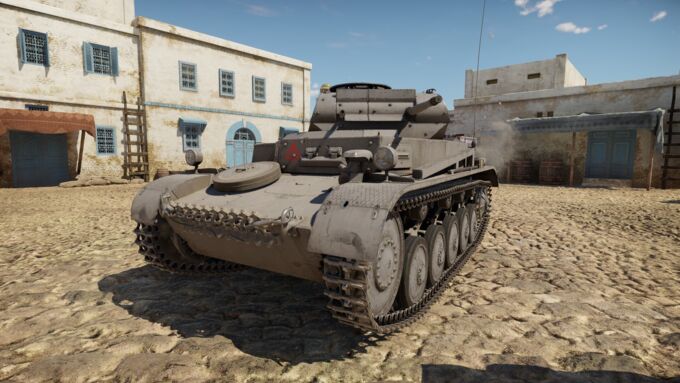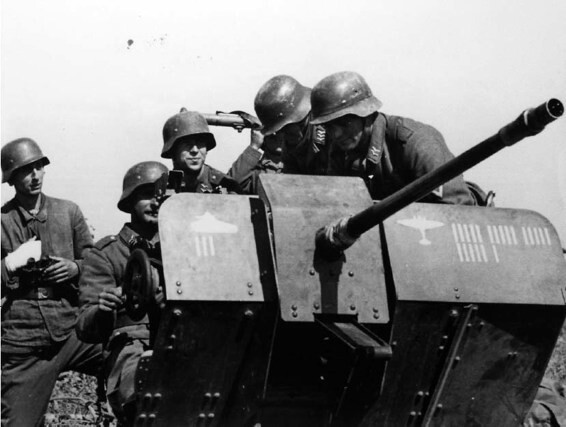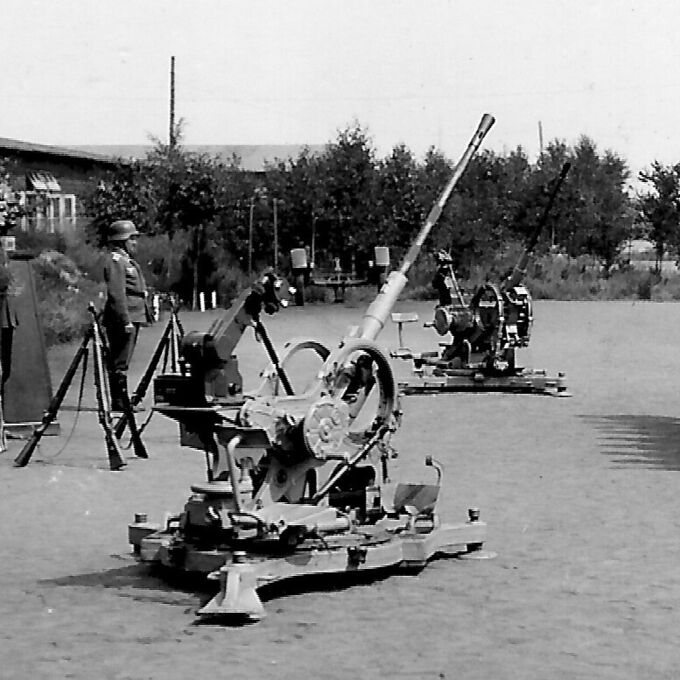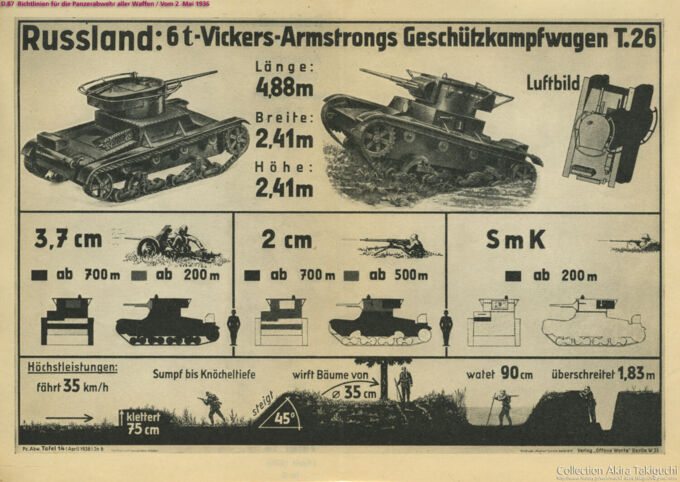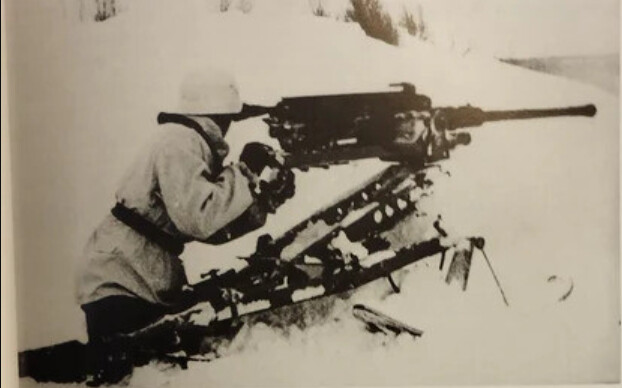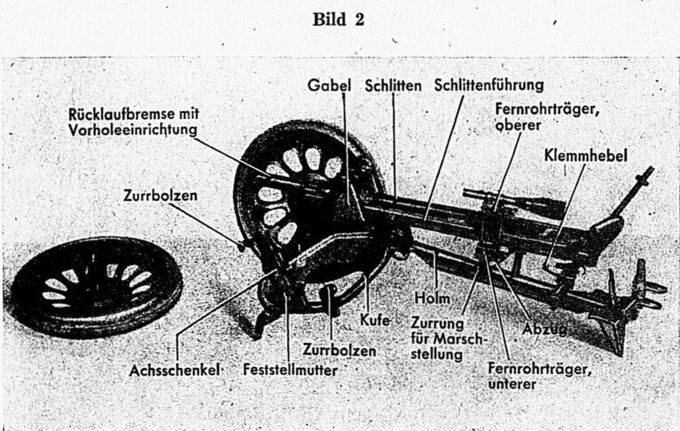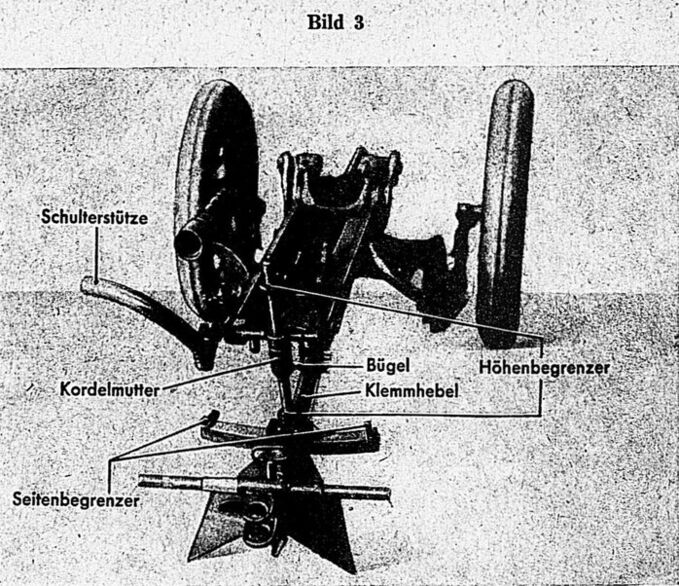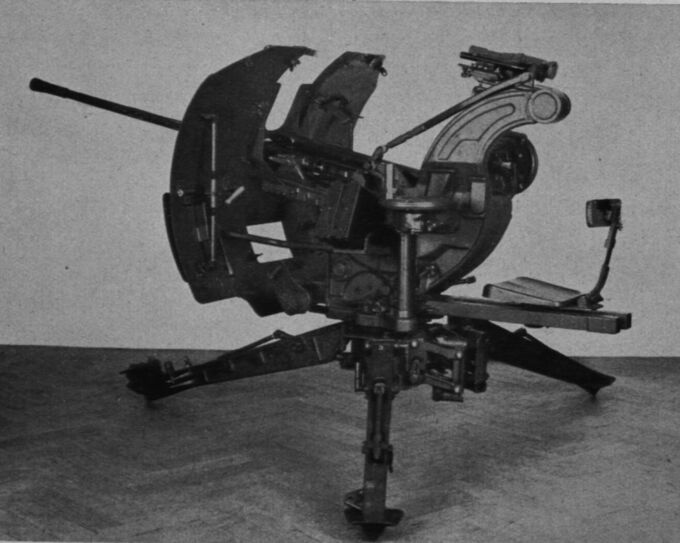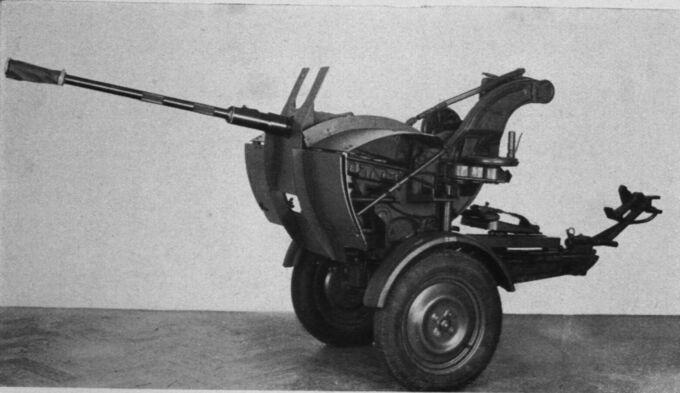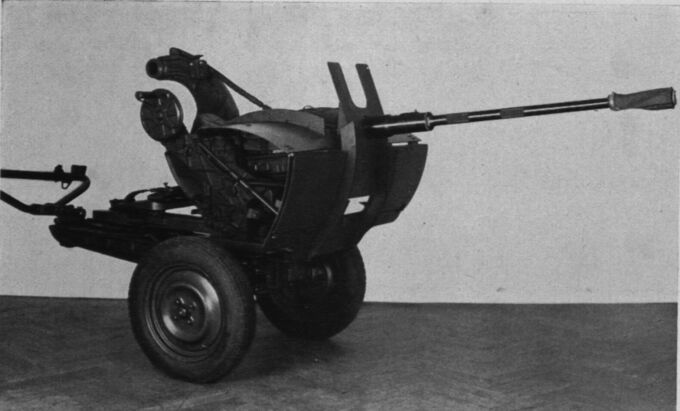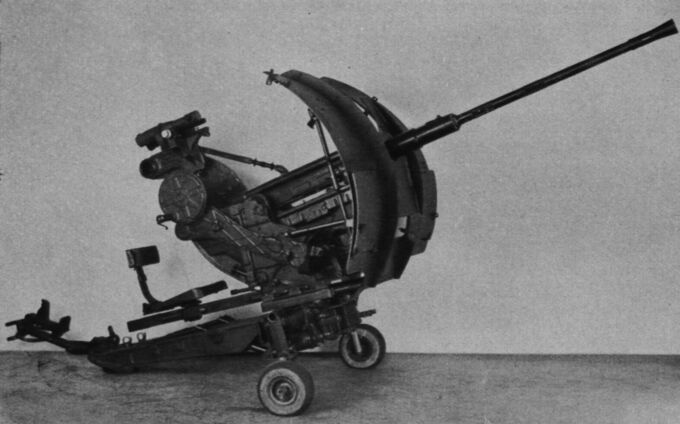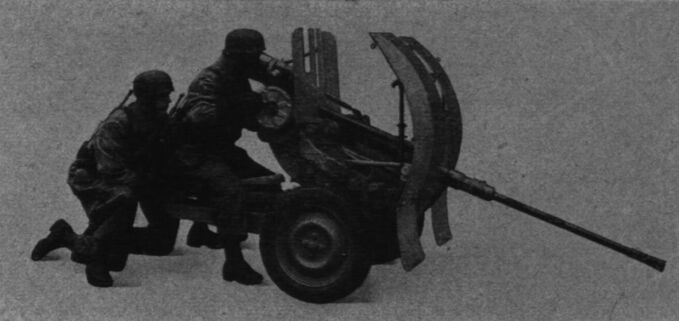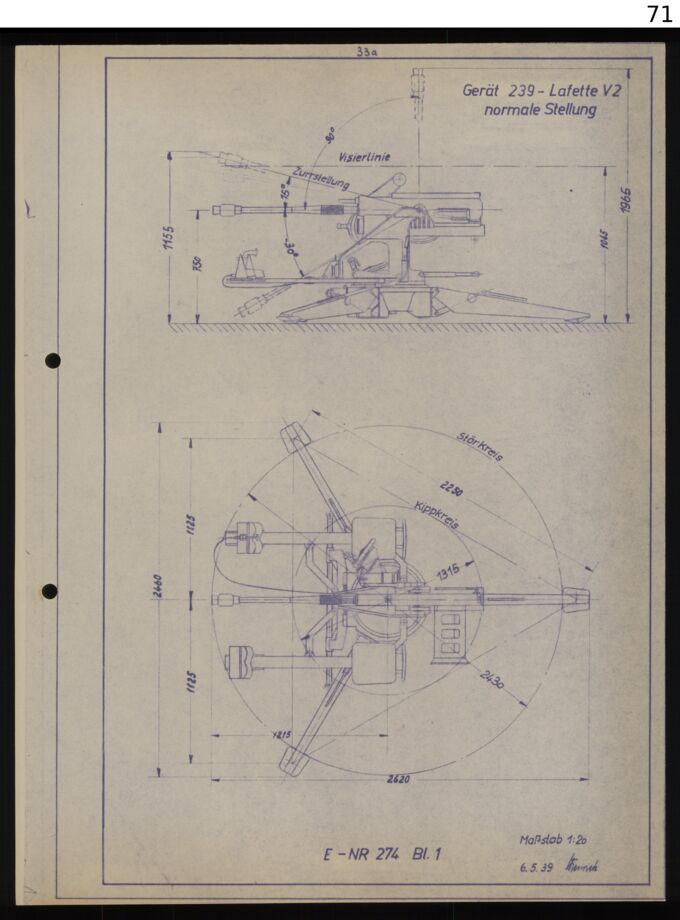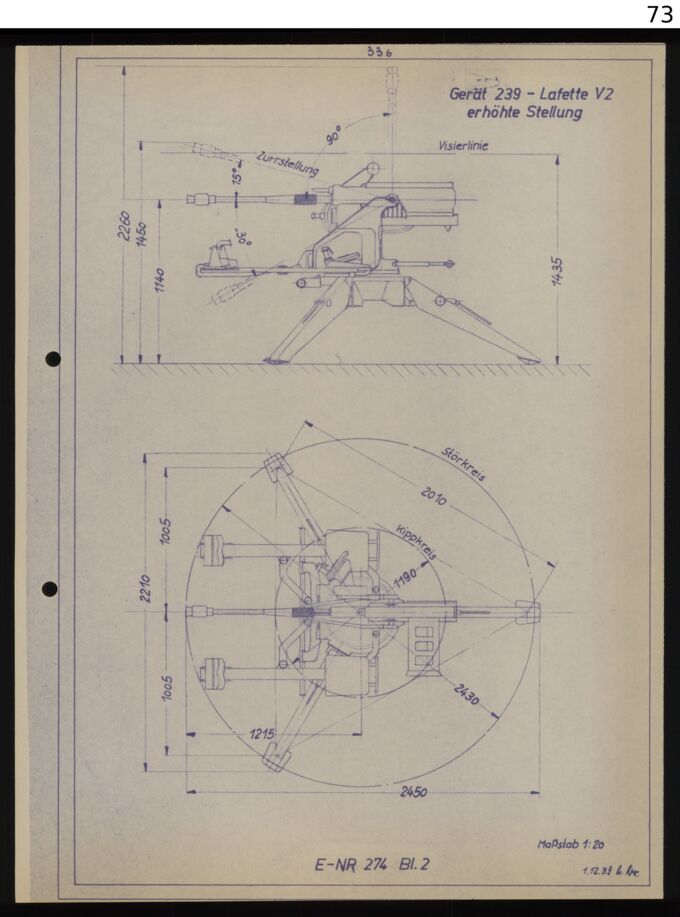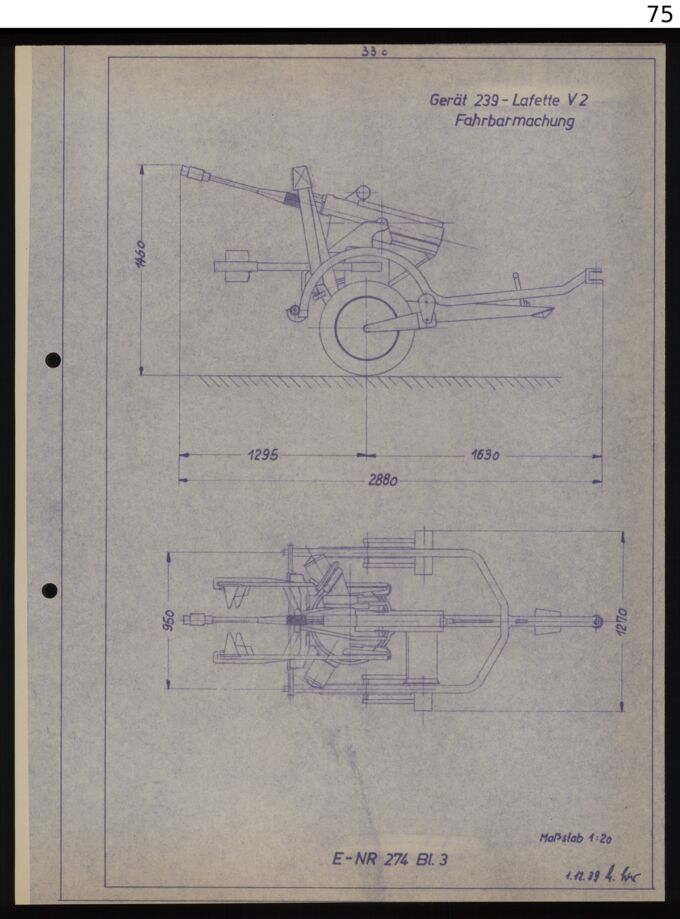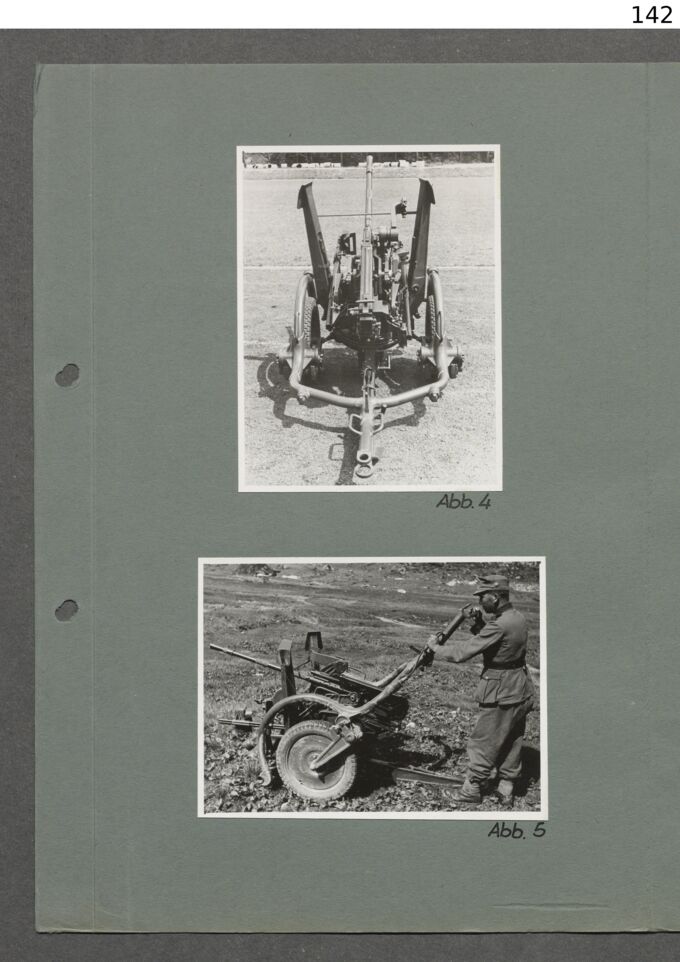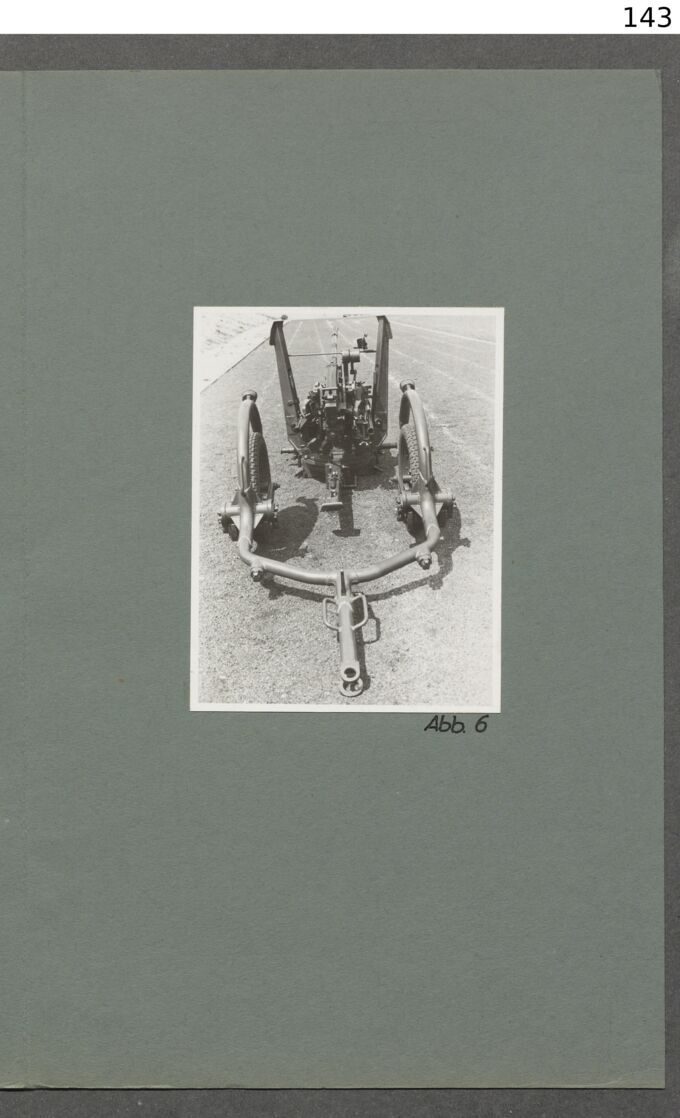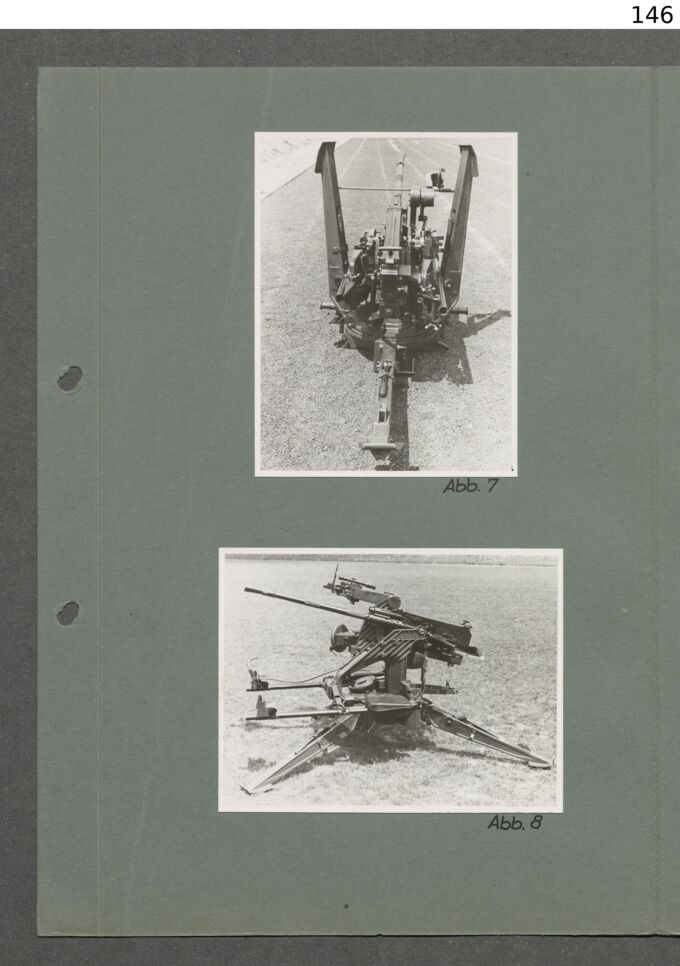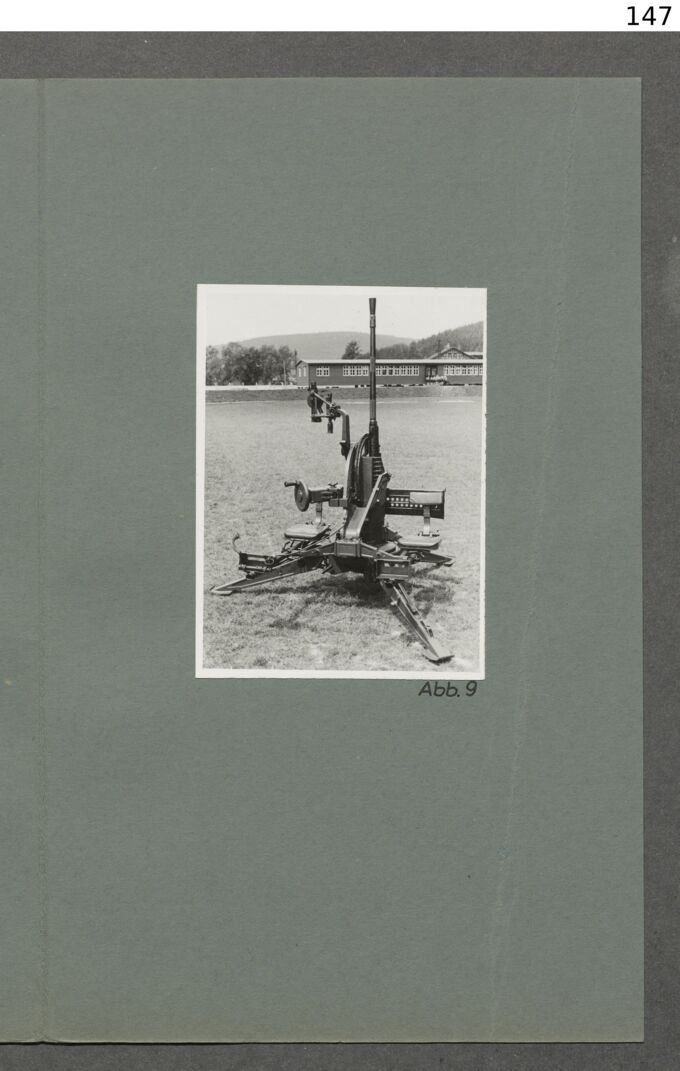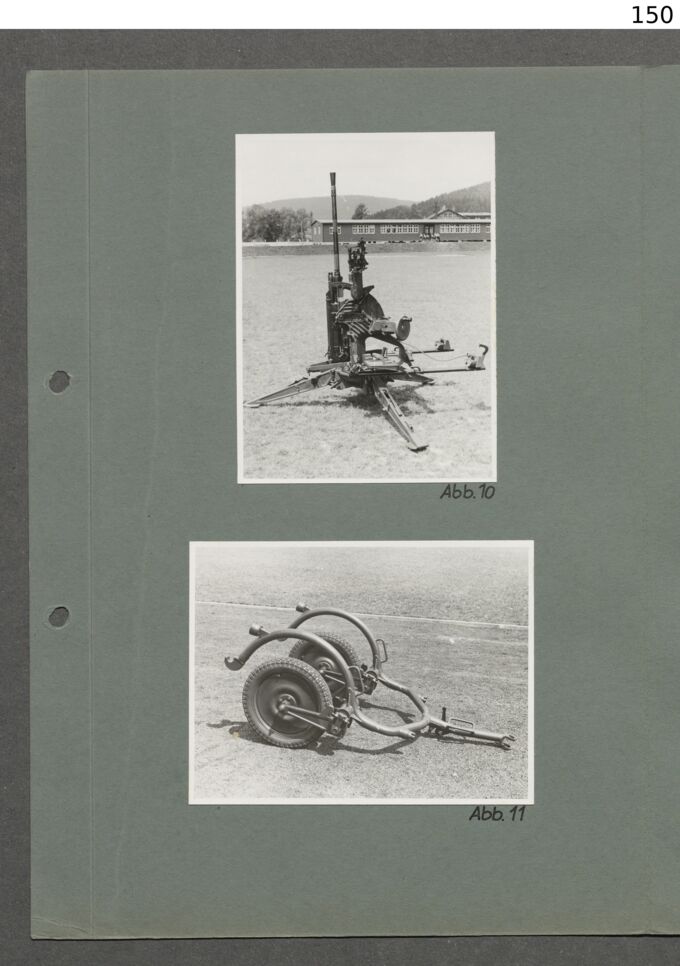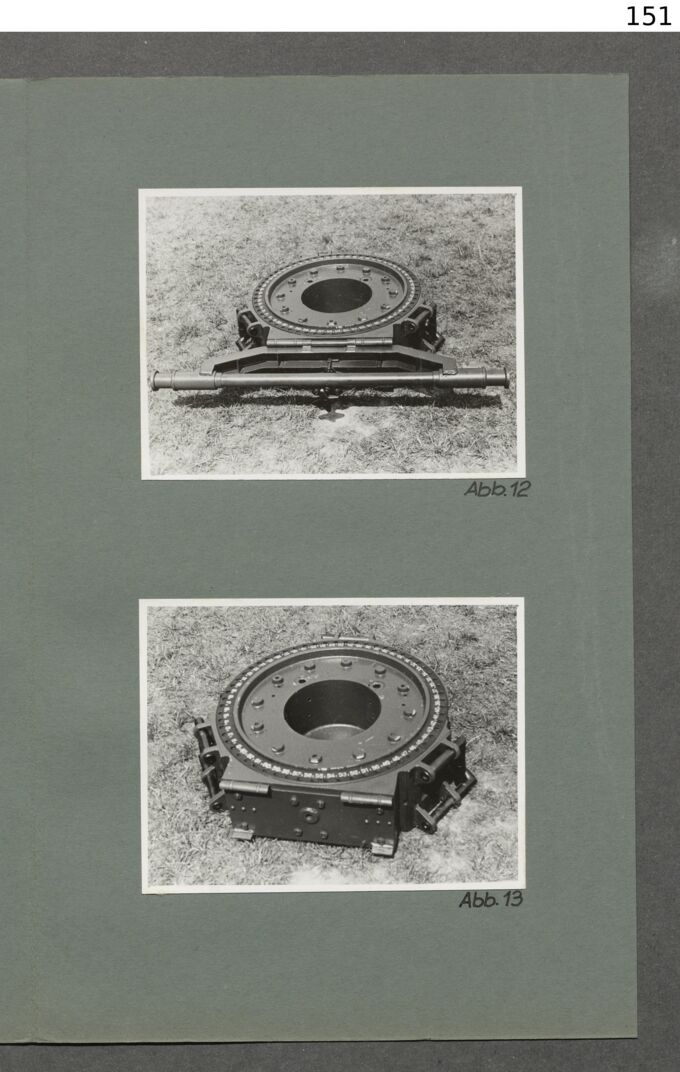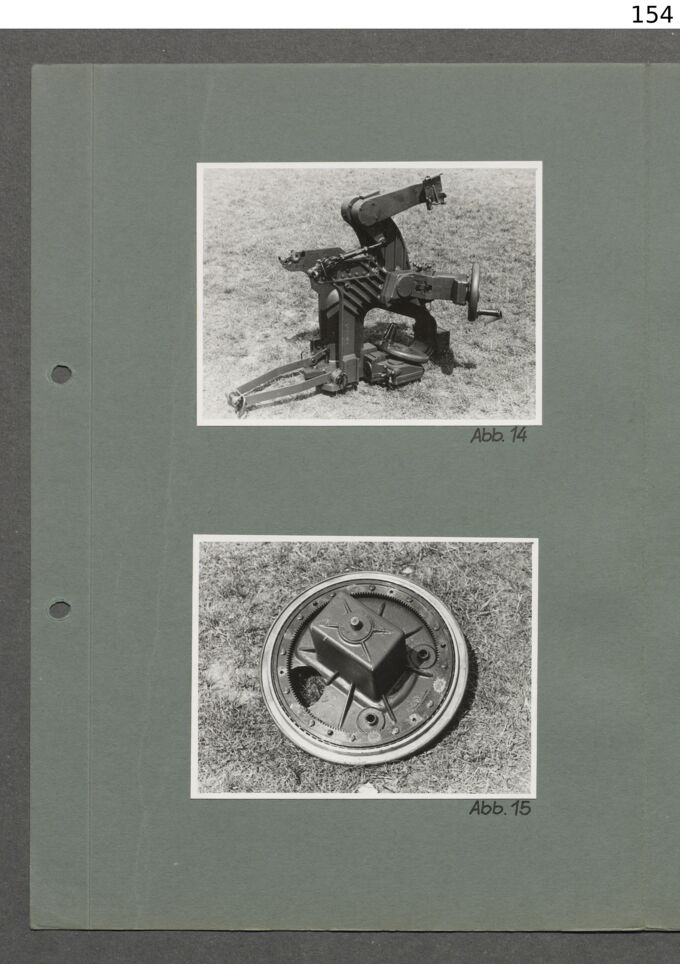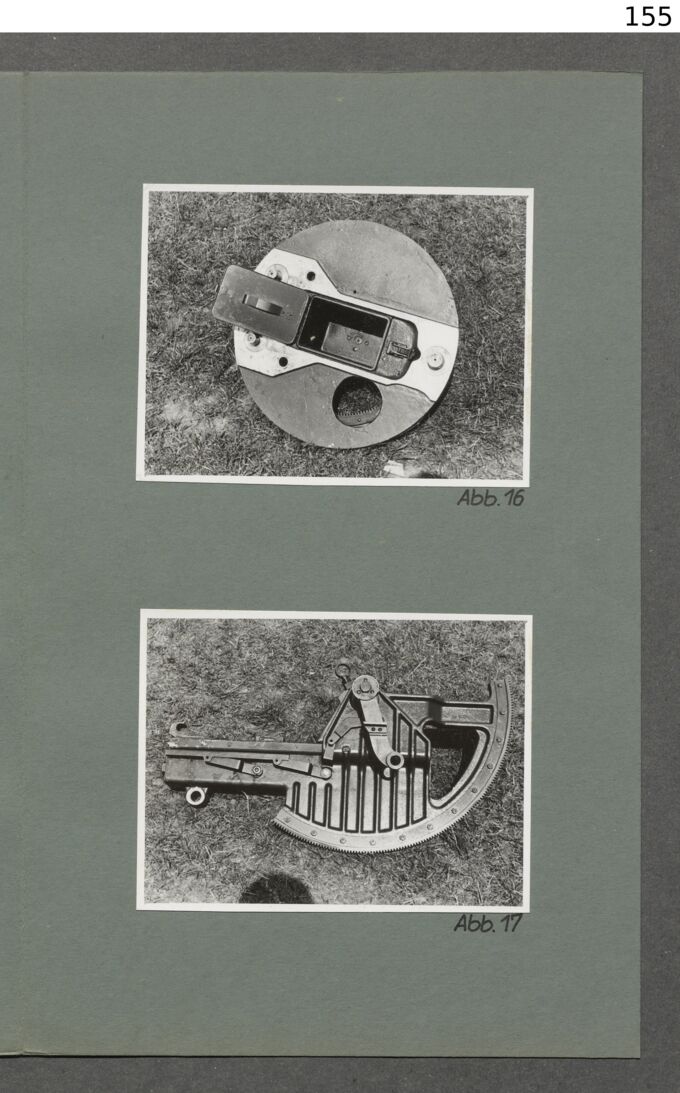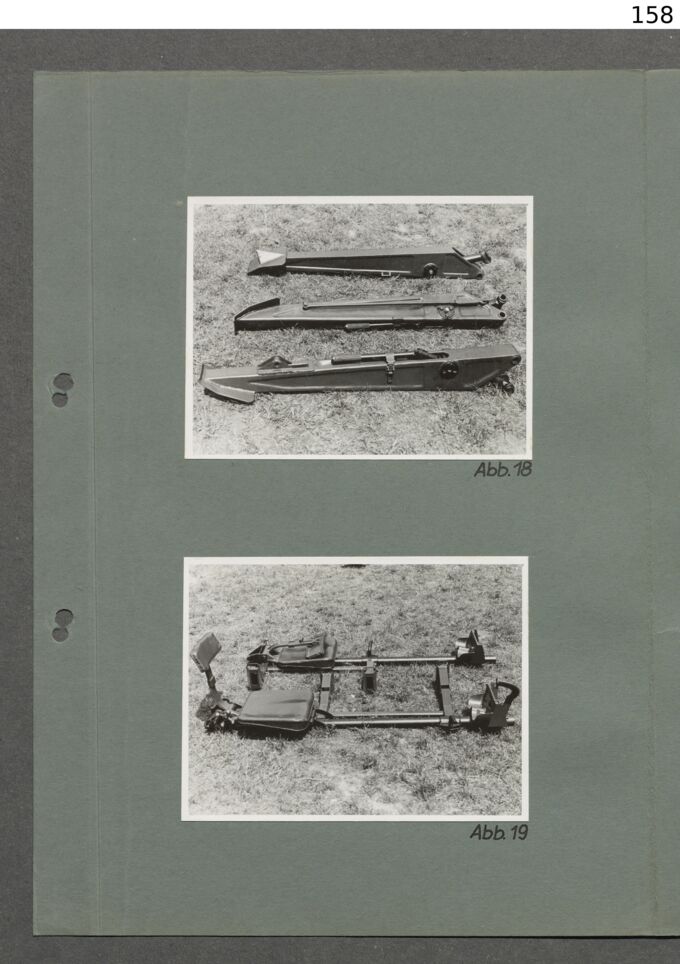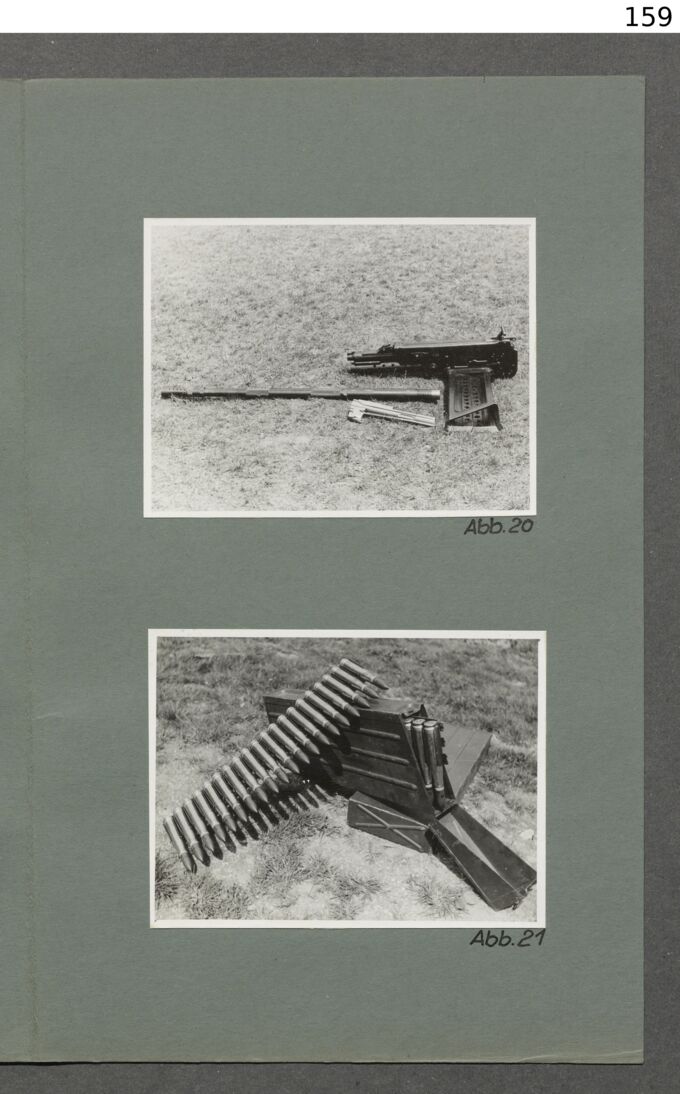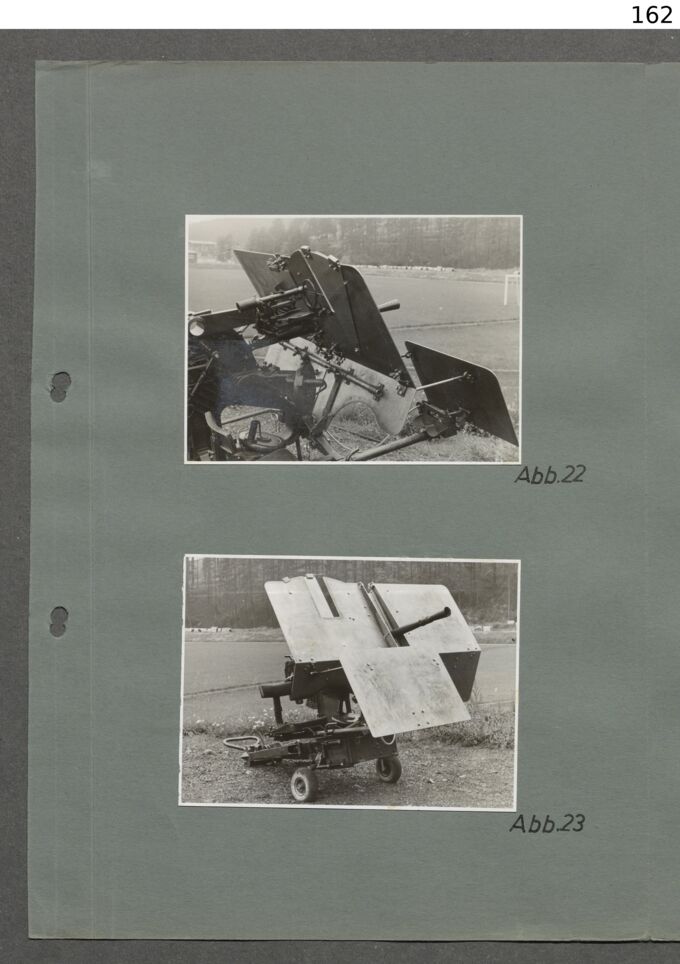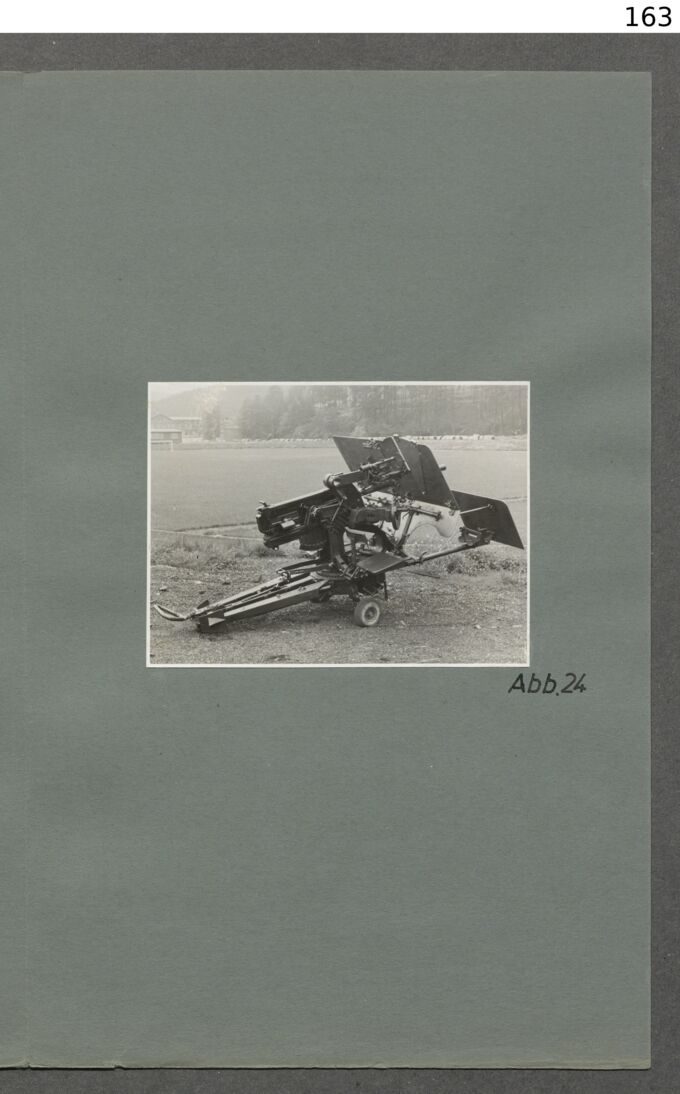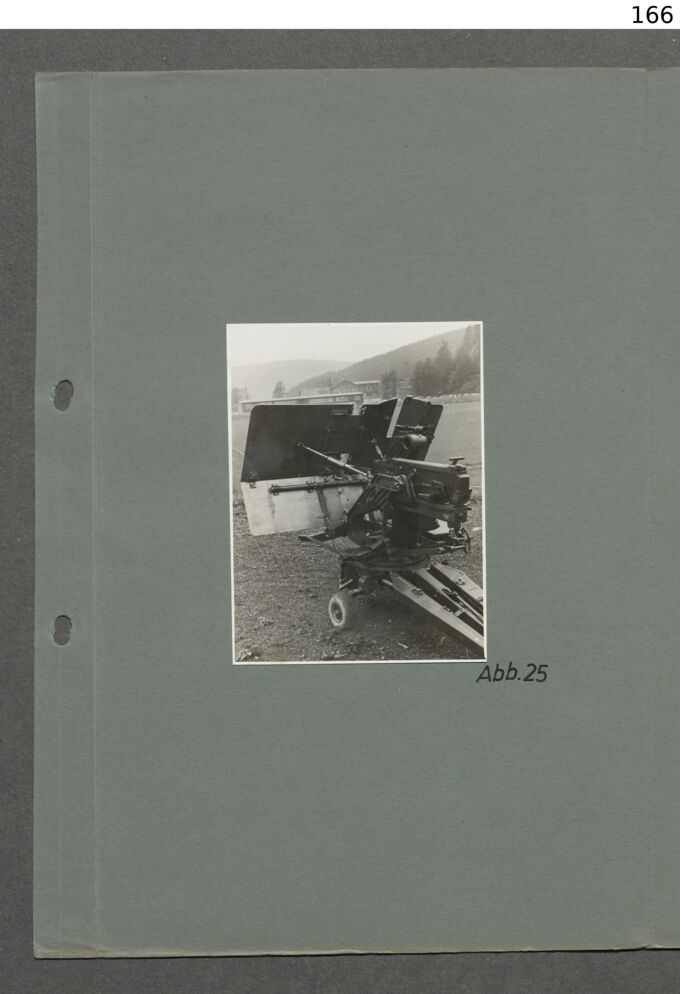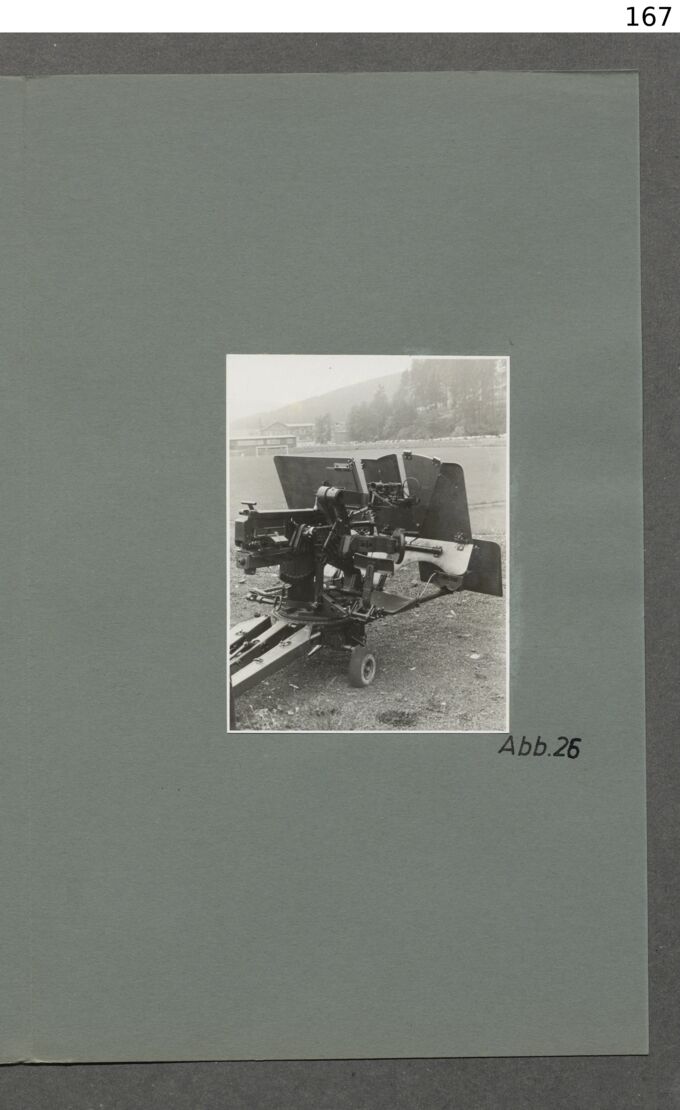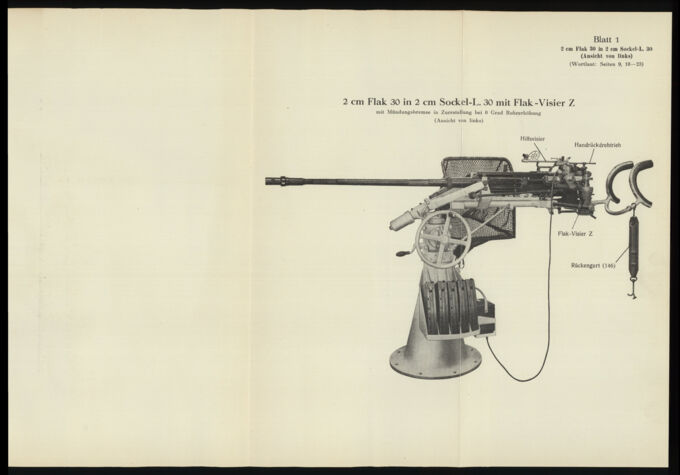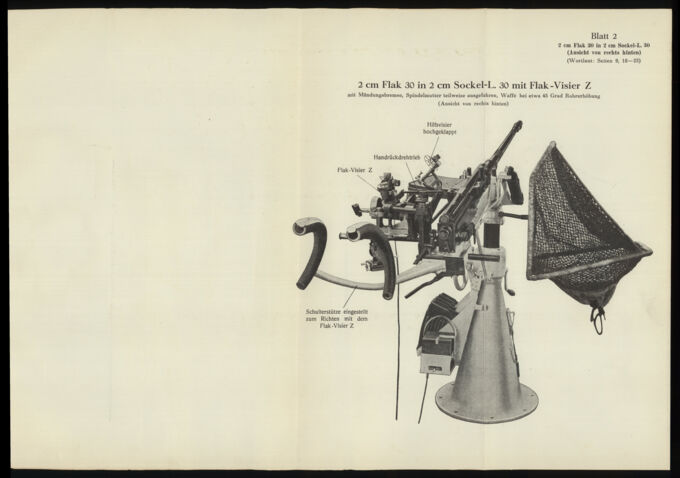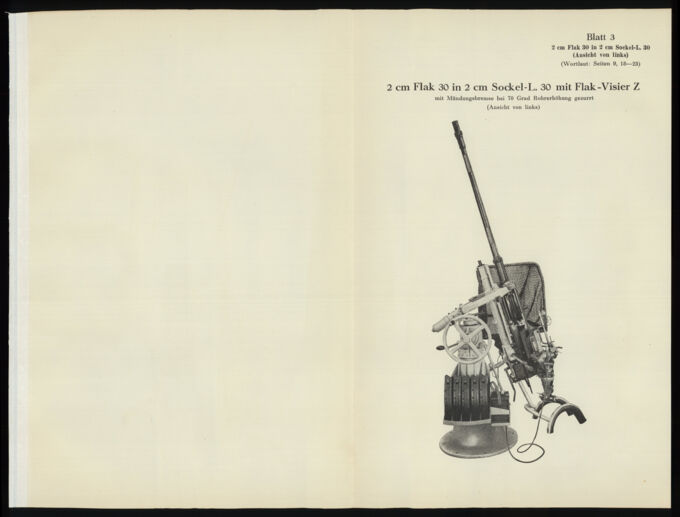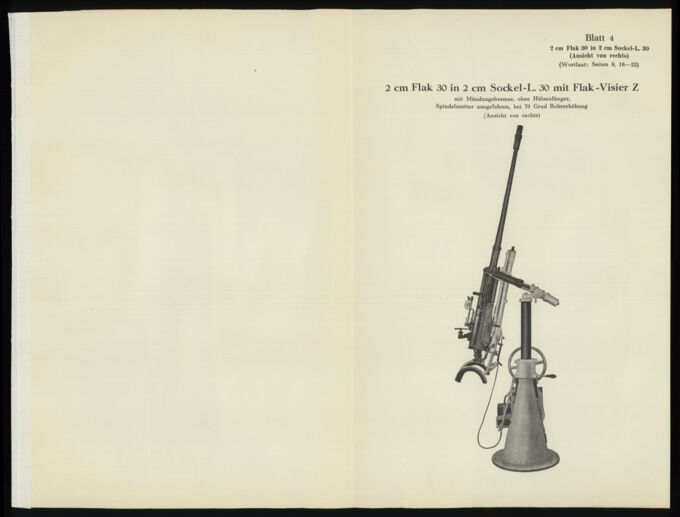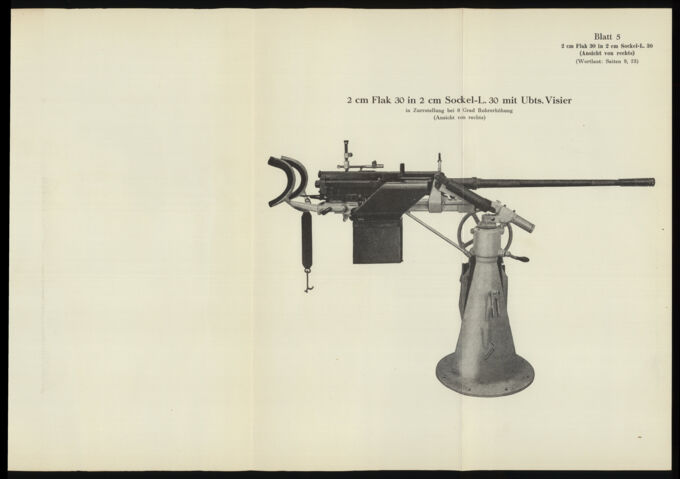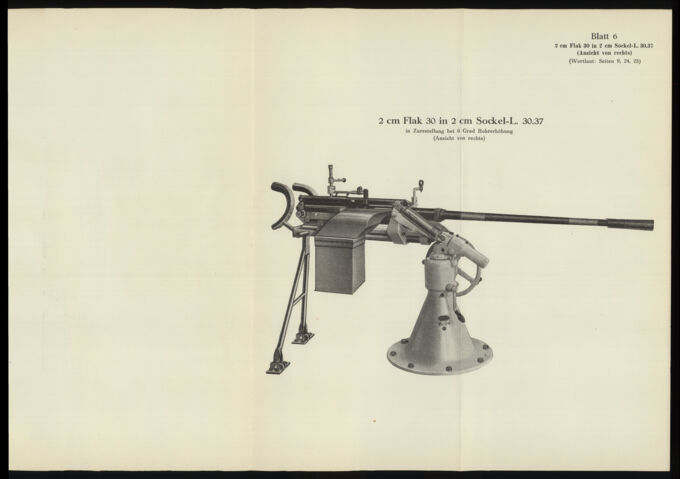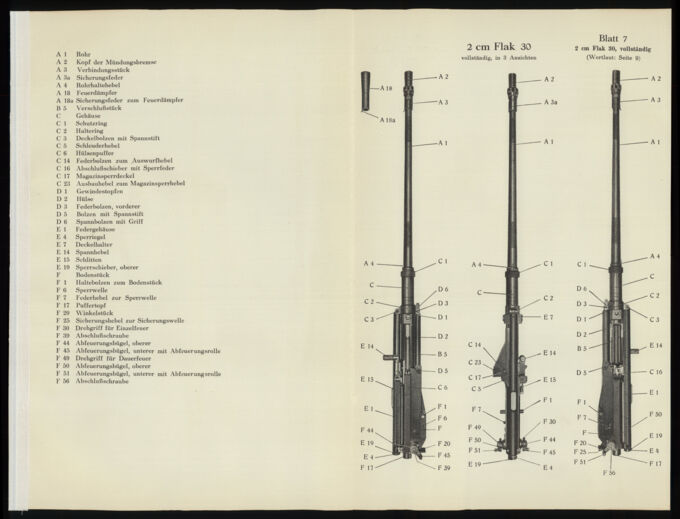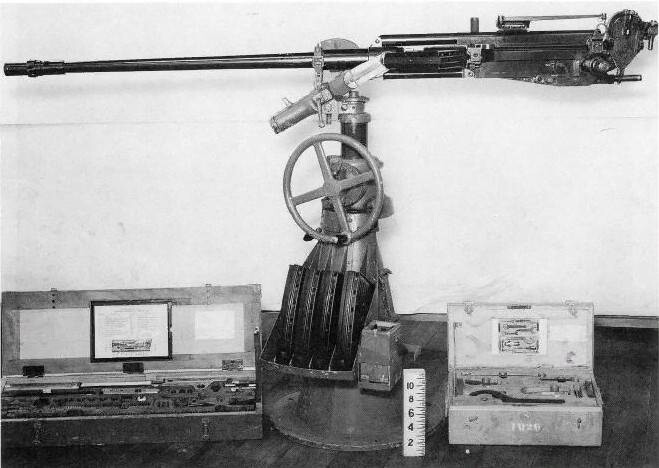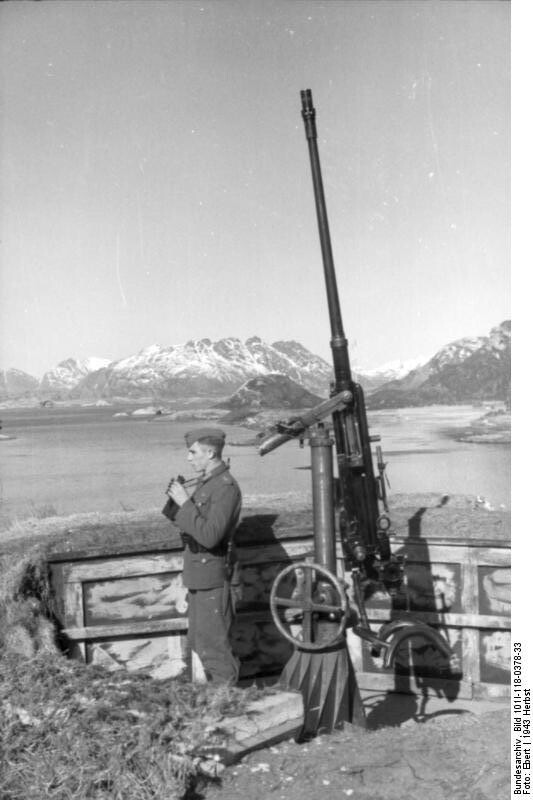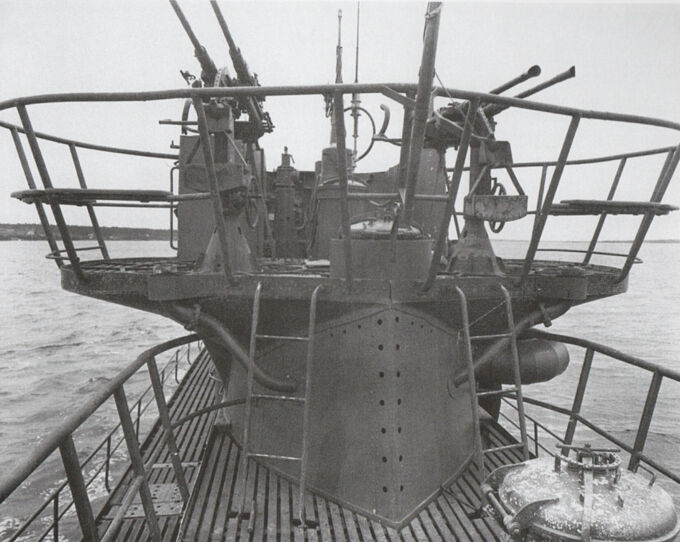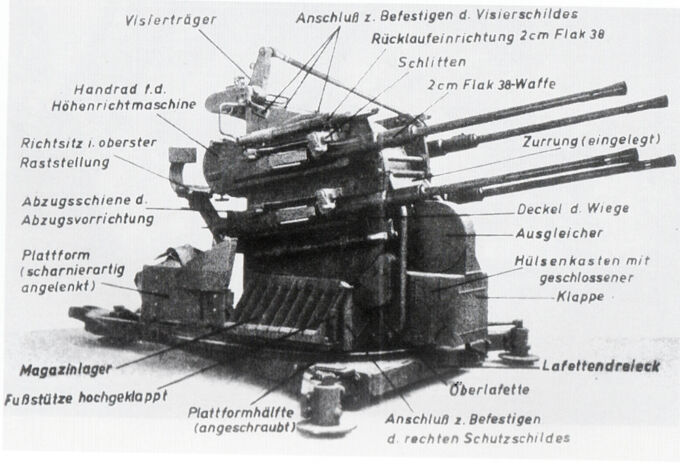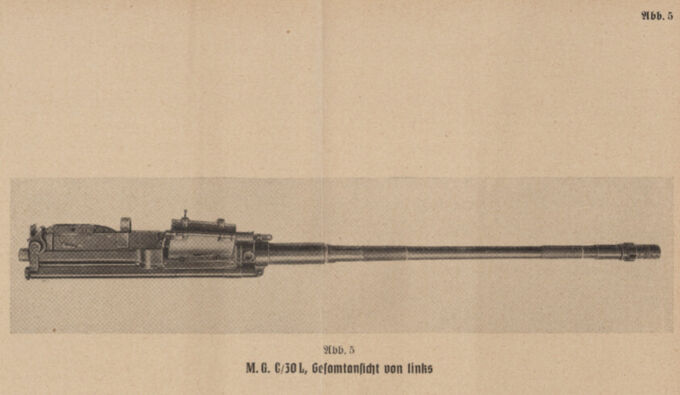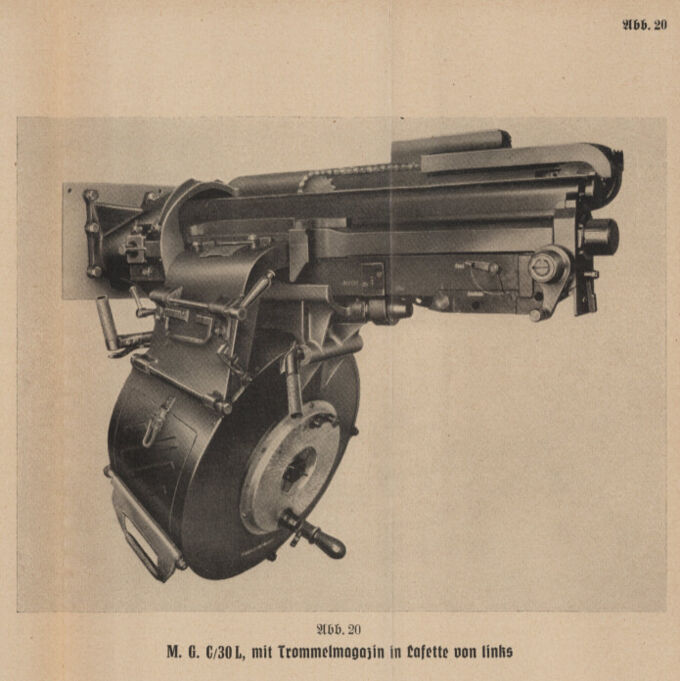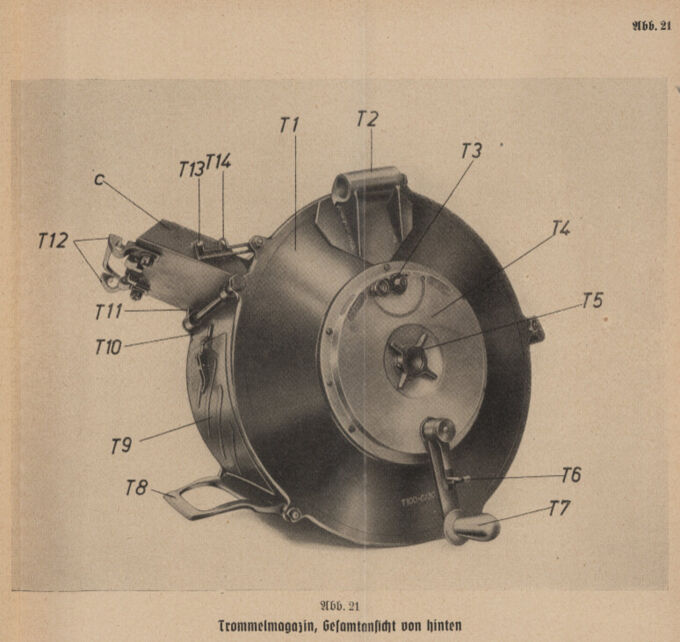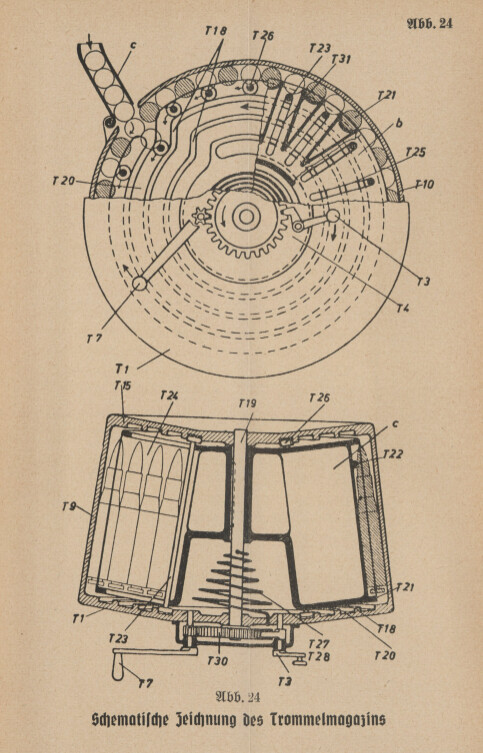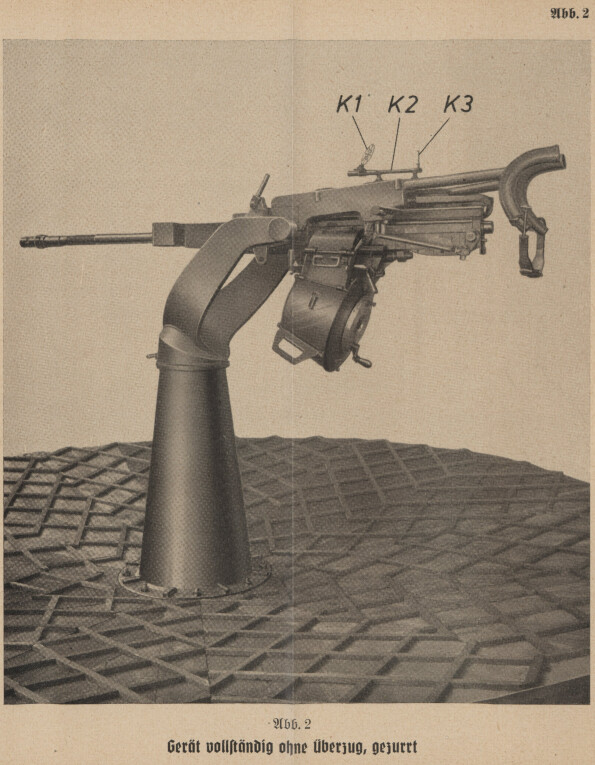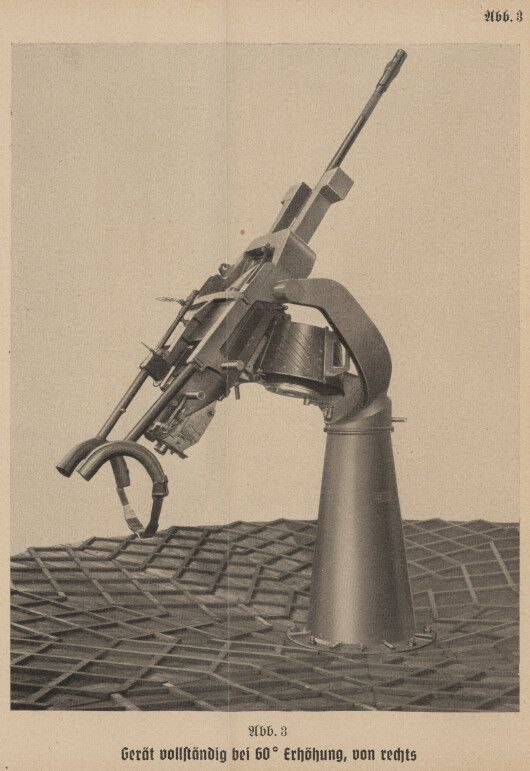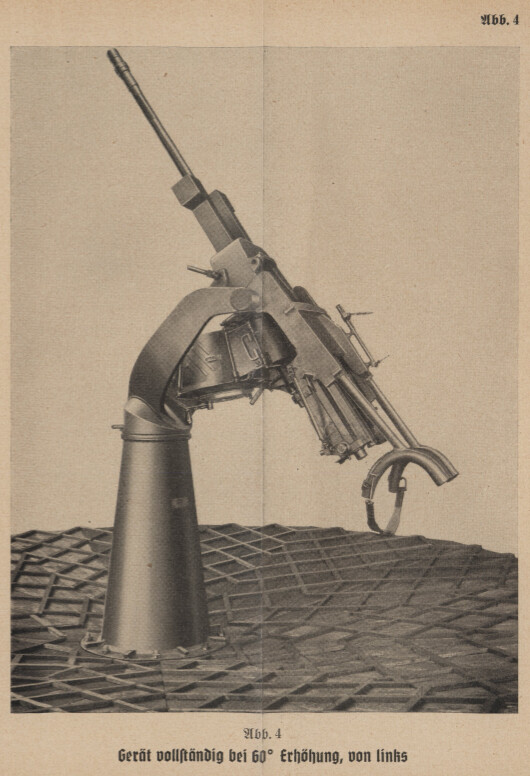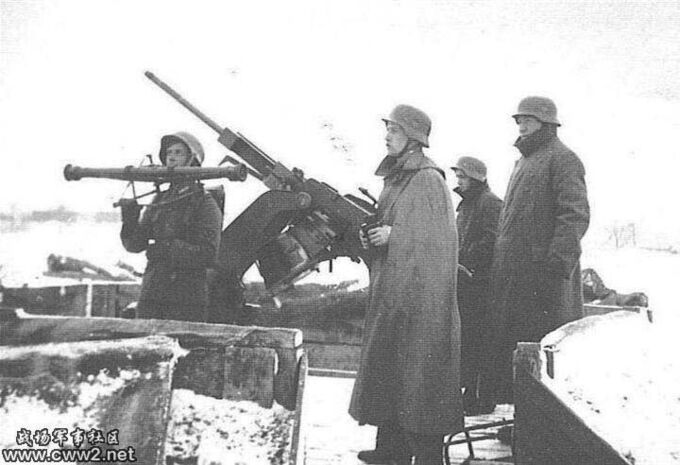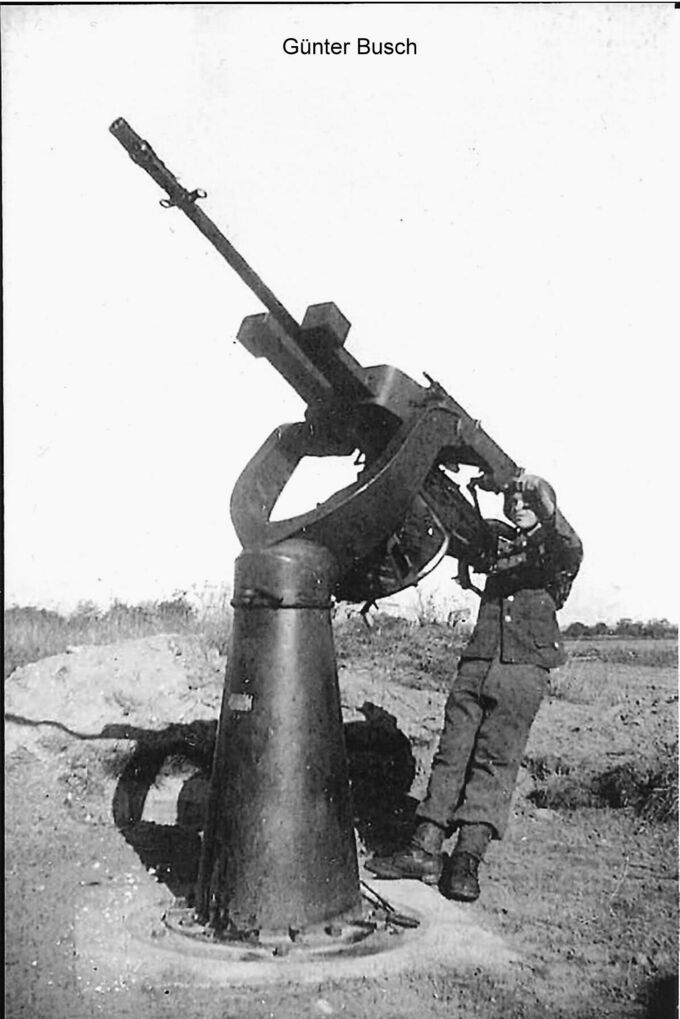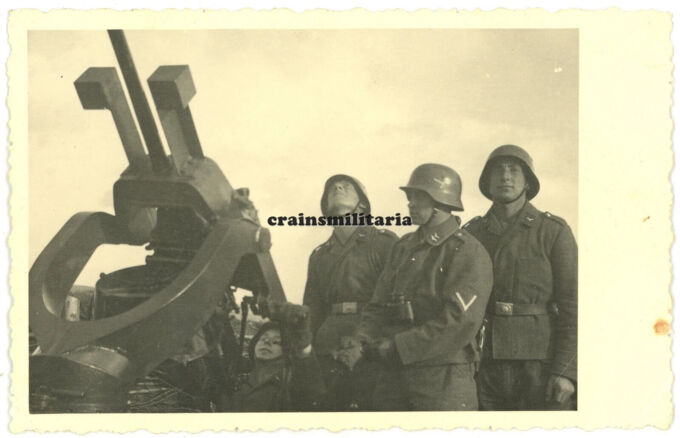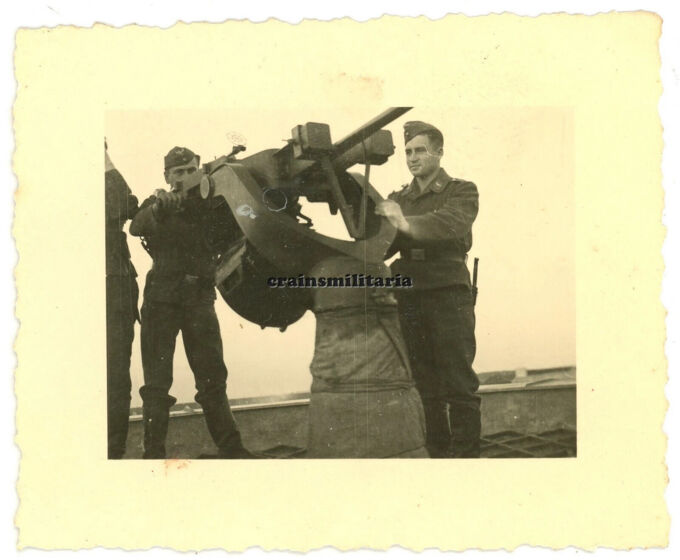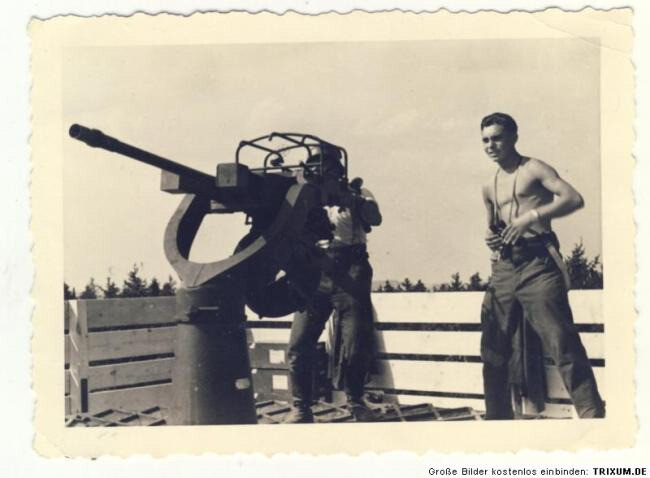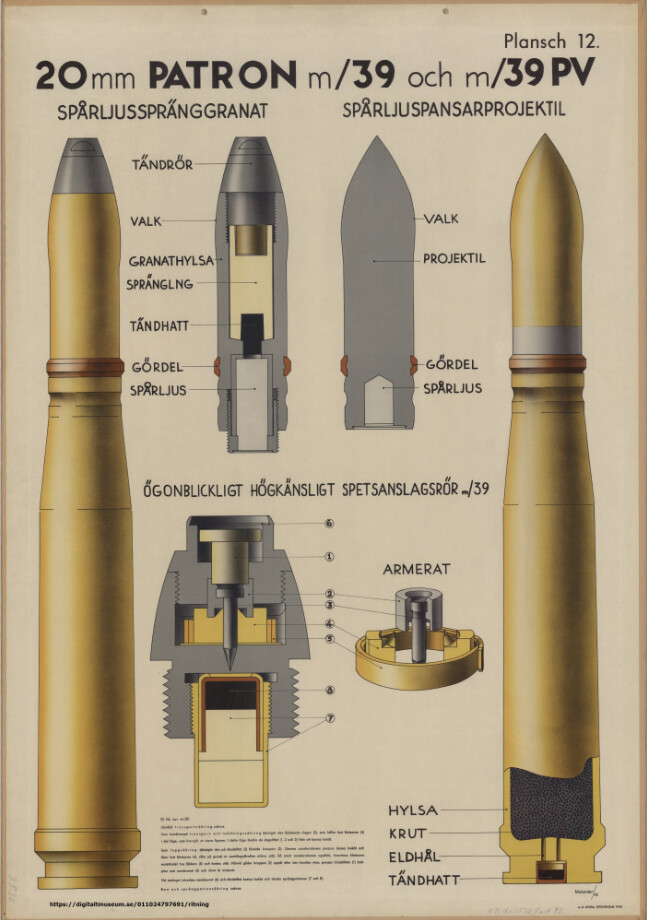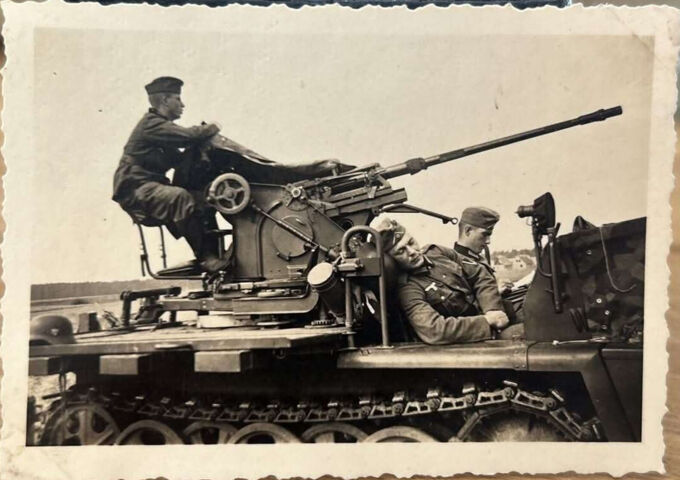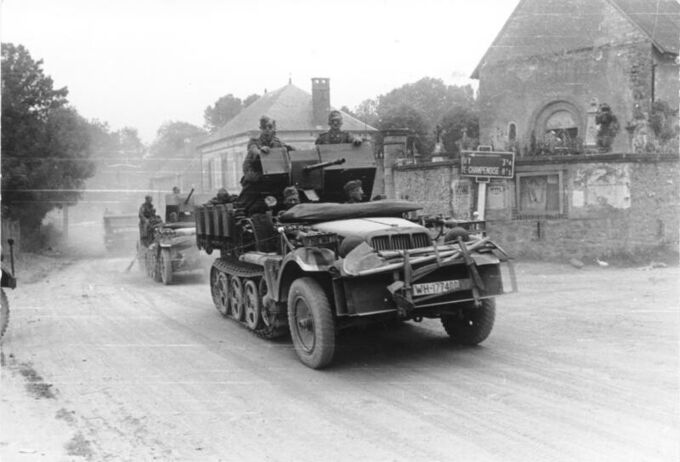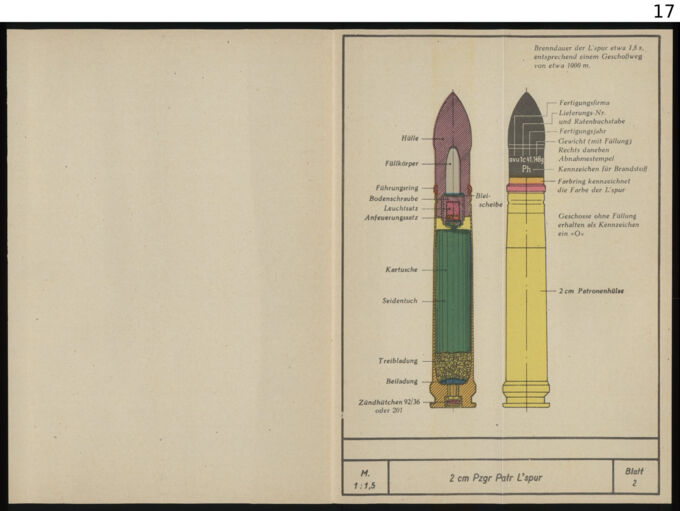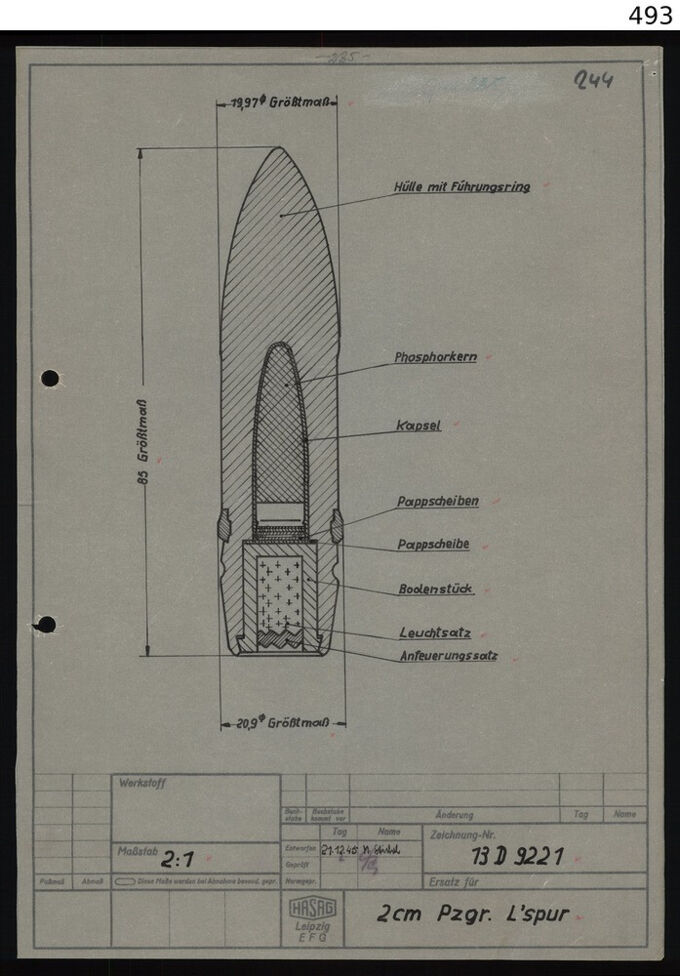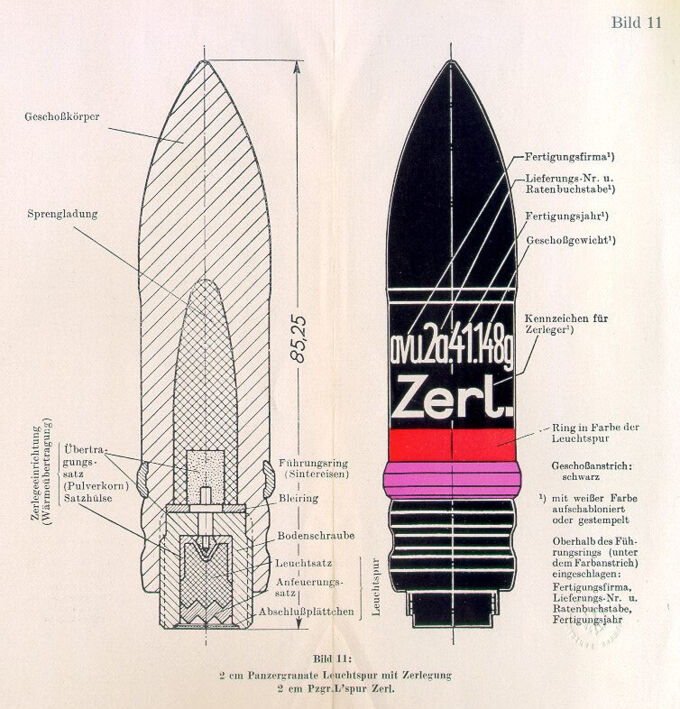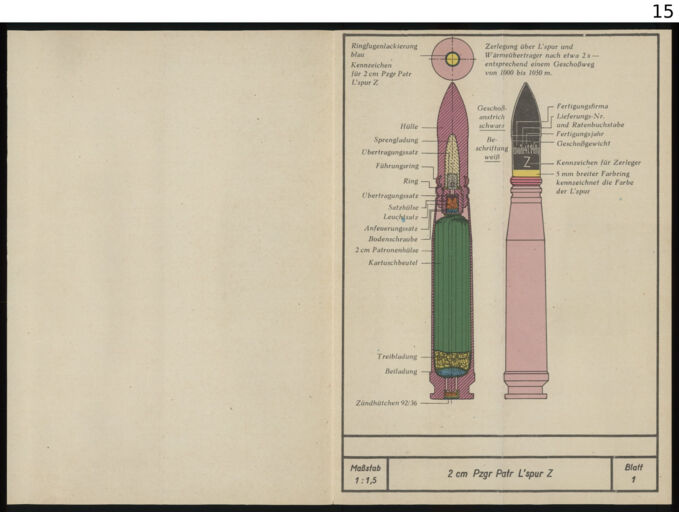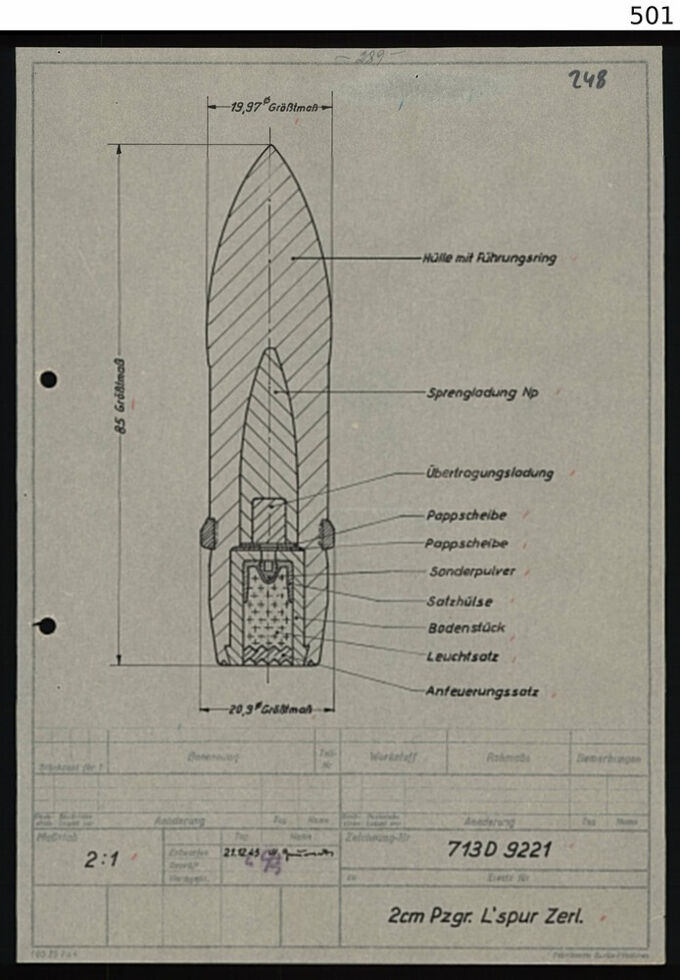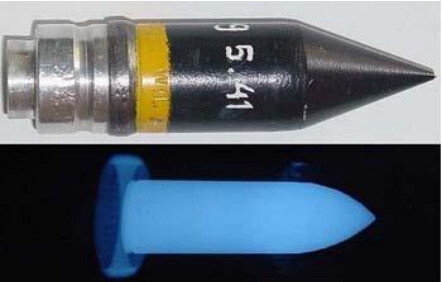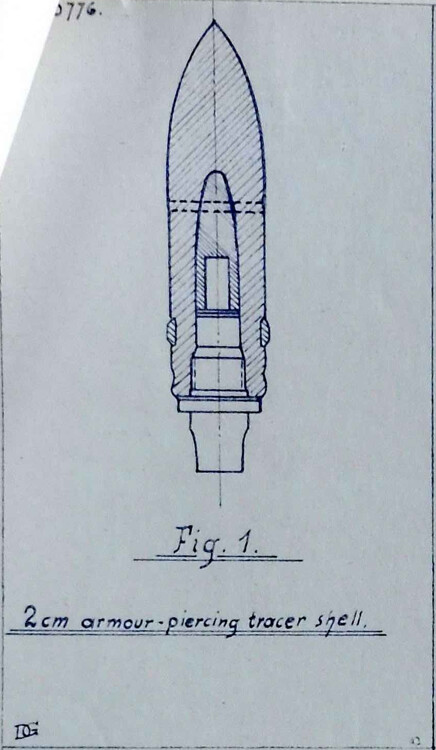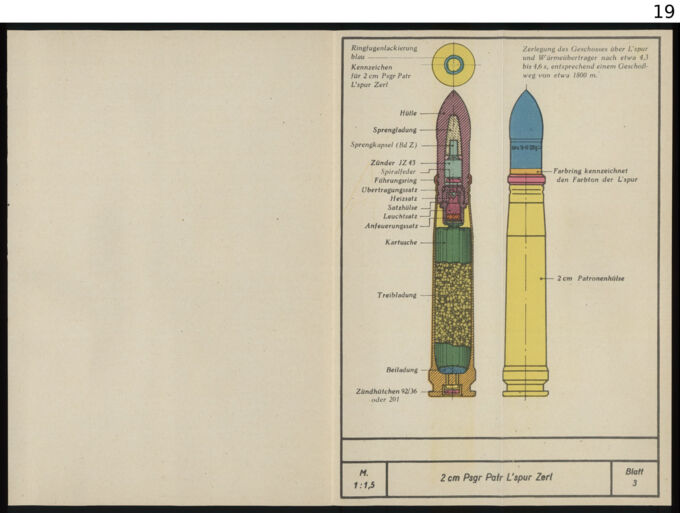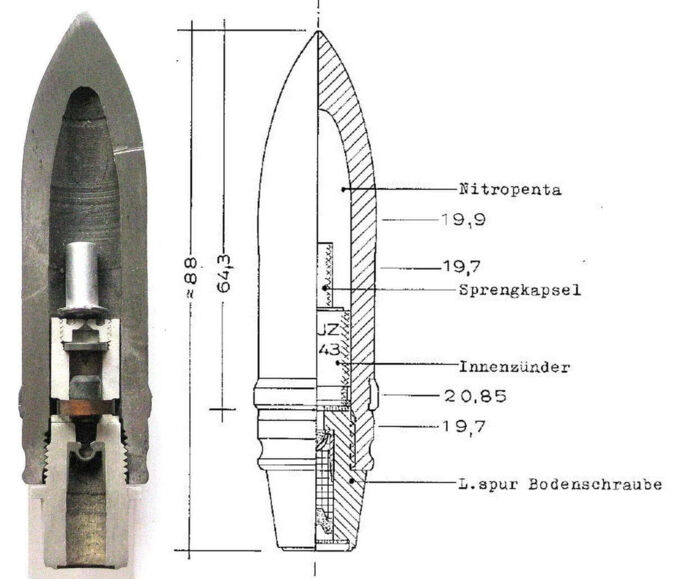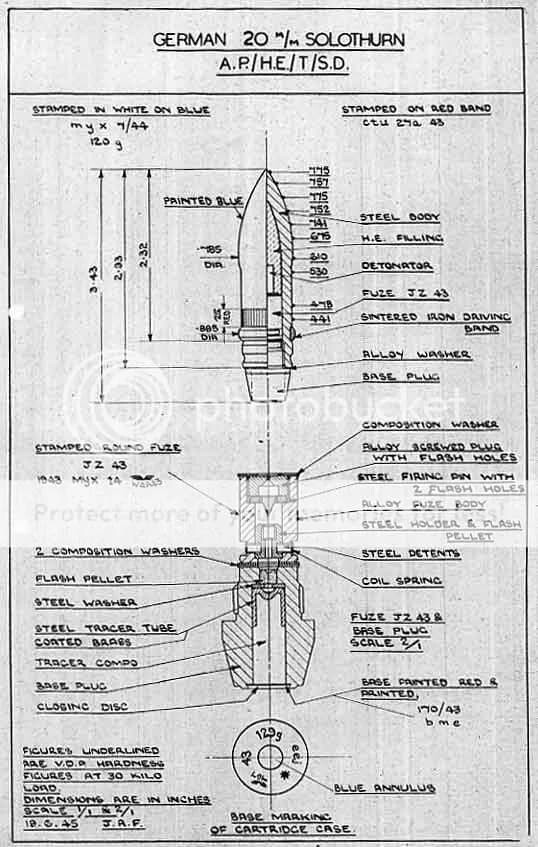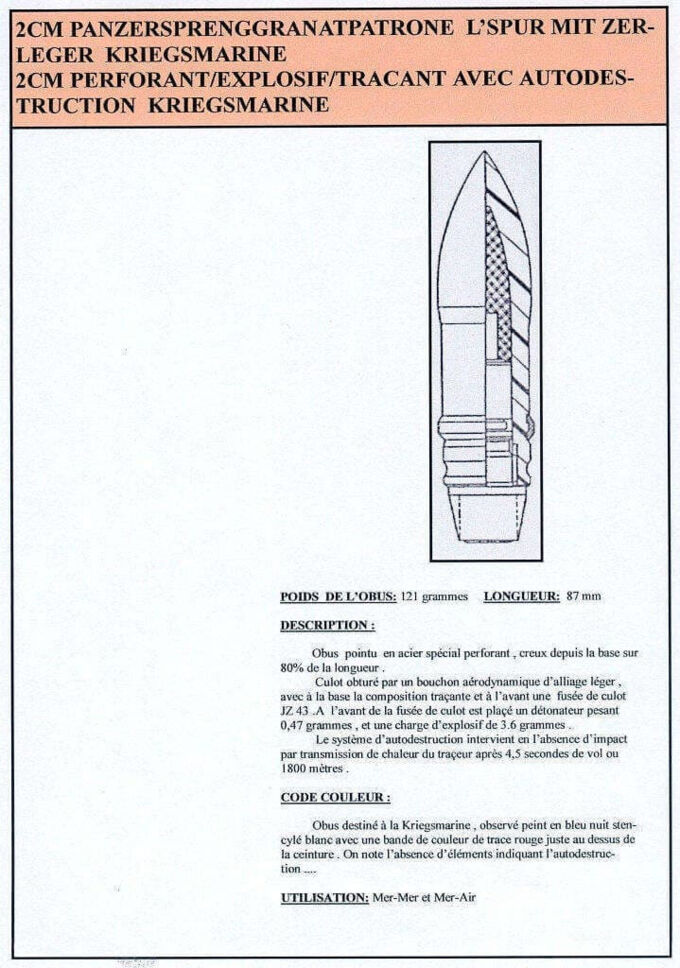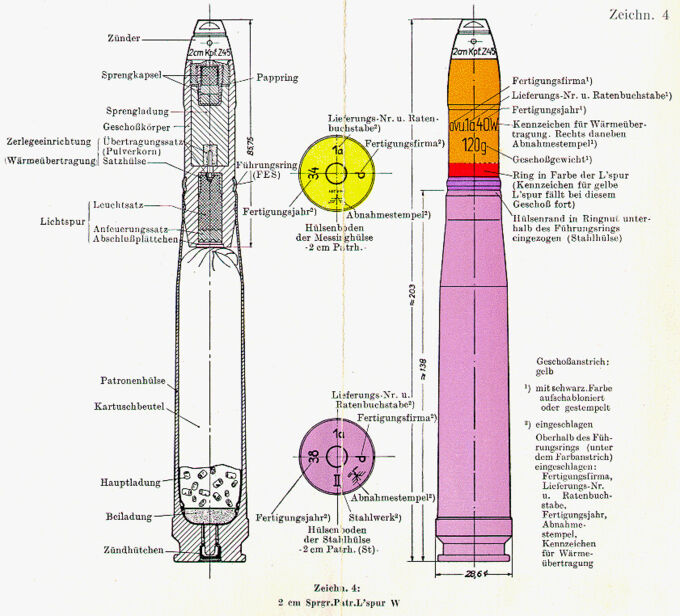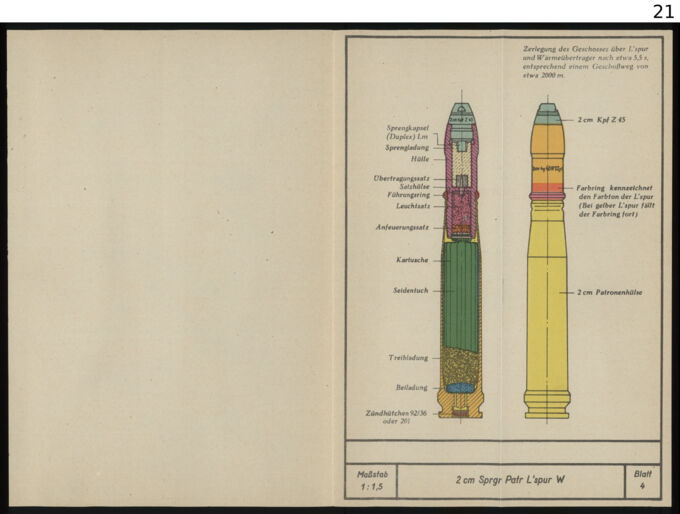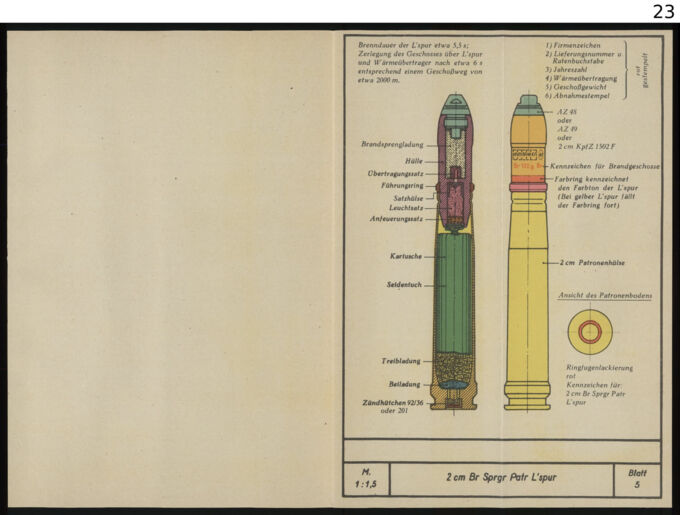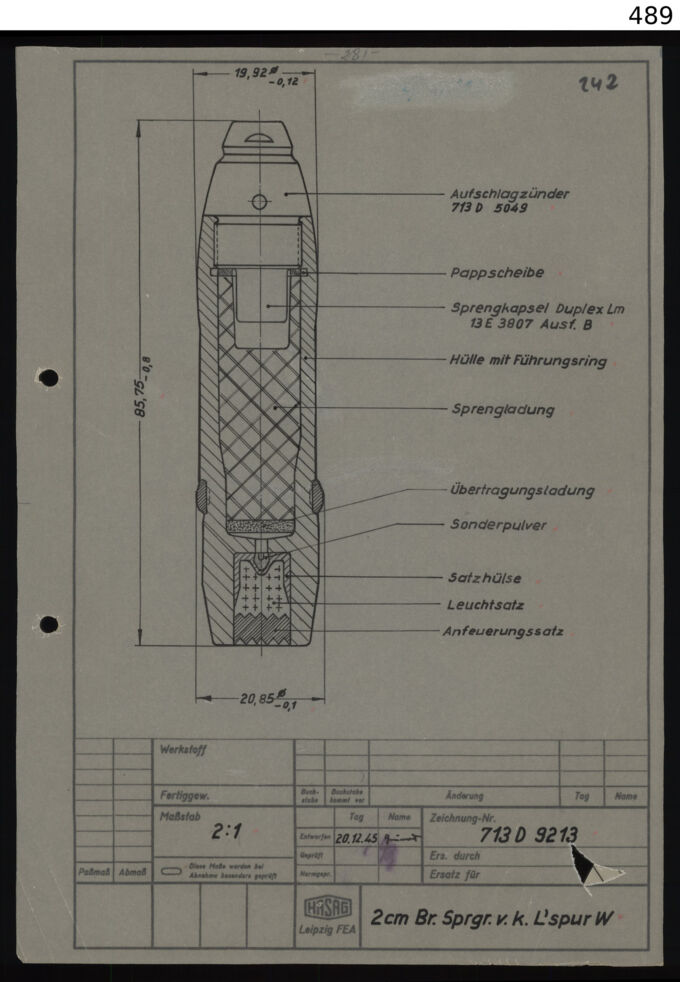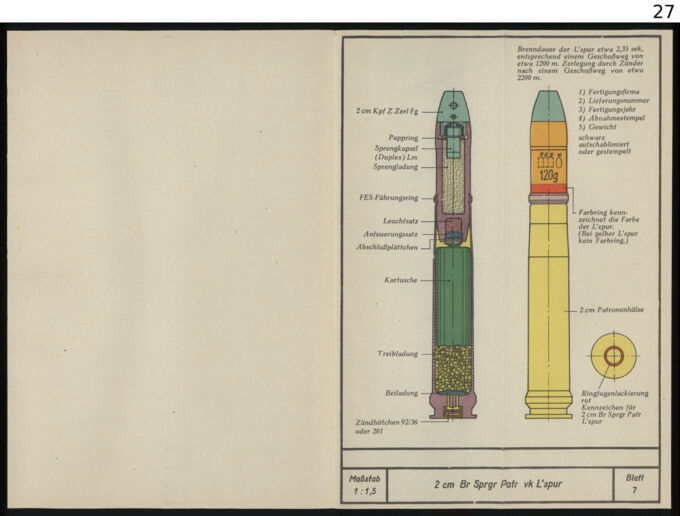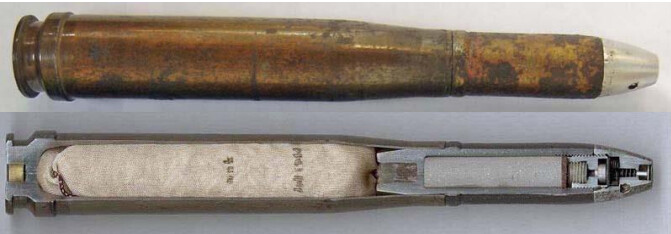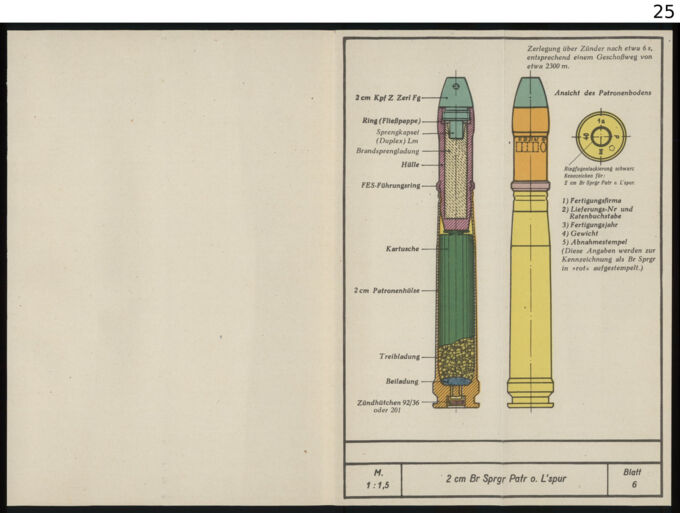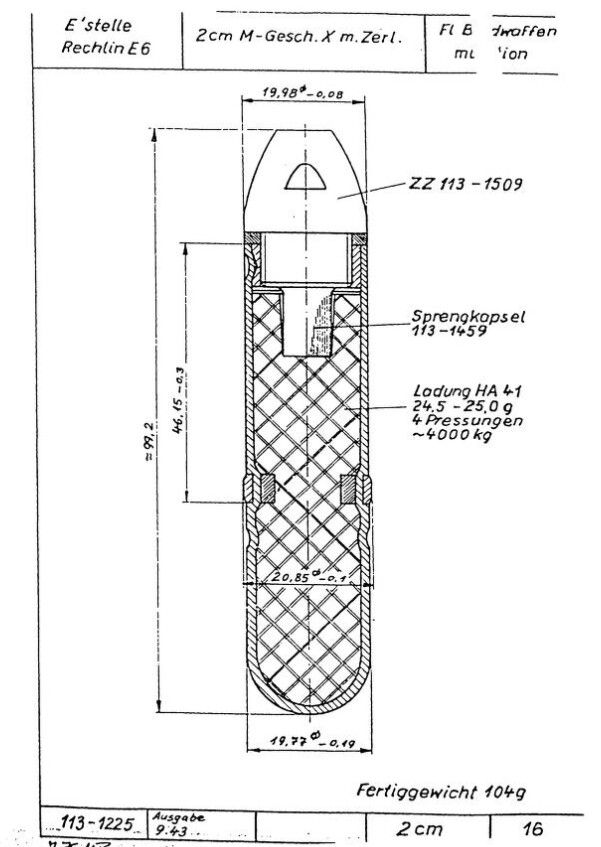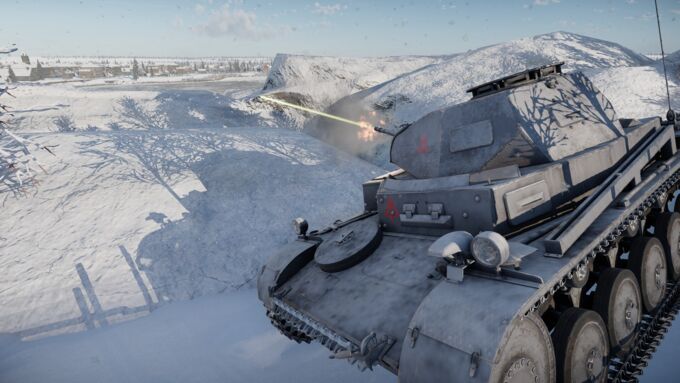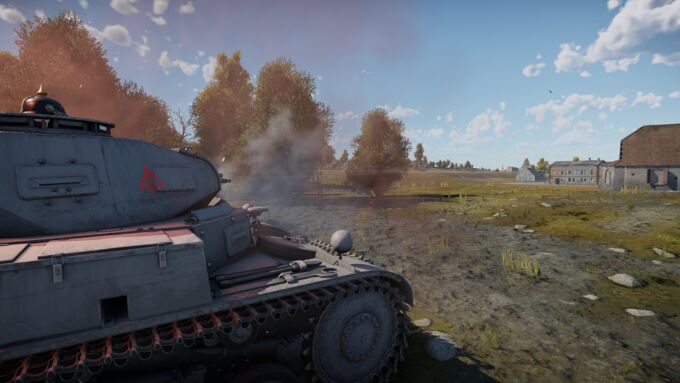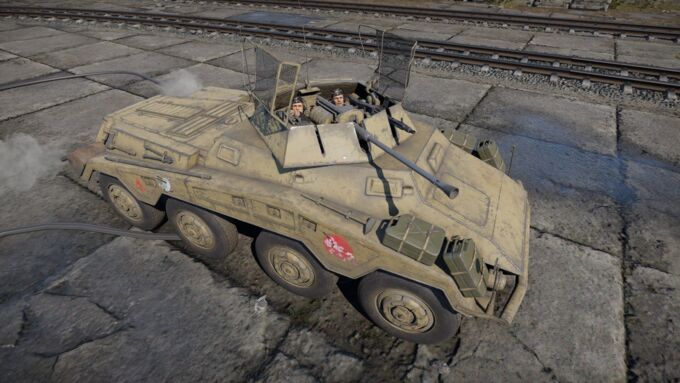This article is about the history of the 2 cm guns using the 20×138mmB Rheinmetall ammunition, primarily the 2 cm KwK/Flak 30/38 L/50/65. It also covers usage by other nations represented in-game, such as Italy with Breda and Scotti guns, and includes a minor guide. The ammo and guns were the smallest mainstay unit of dual-purpose AA/AT guns, starting in the late 1920s and actively used and improved until 1945. These guns were used as infantry super heavy machine guns (Überschwere MGs), tank armaments (KwK), as well as infantry and vehicle AA guns (Flak).
History
Development
The 2 cm ammo and guns were a development by Rheinmetall starting in the 1920s. Rheinmetall (among other German companies) extended their factories and bases into other countries to restart development and production of ammo and guns outside the Treaty of Versailles after World War I. One such country was (and still is, with Oerlikon) Switzerland, where Rheinmetall bought up the company Solothurn in the late 1920s and used it as a facade company for arms development, including the 20×105mm and 20×138mmB ammo, as well as the S-18/100 and S-18/1000 anti-tank rifle/guns, which were, unlike popular belief (and facade name in some writings), not by Solothurn nor the Swiss.
The ammo and guns were developments of Rheinmetall for a new requirement of 20mm AT rifles. However, the first rifle was seen as underpowered, and the other as too big and cumbersome (compared to later developments, such as the 7.92×94mm PzB.38/39). As such, these did not go into active production or service with the German army; instead, the ammo was continued with other armaments (such as the 20mm MG 204 with 20×105mm) and a range of improved models and side grades (with different systems), starting with the 20mm S-18/1100, which was a selectable semi/full auto gun with available mounting for proper AA use.
The 20×105mm was used only in very few examples with the German army, on a couple of guns and tested on secondary naval aircraft intended and used as flexible armament. However, the 20×138mmB Rh went on to become one of the most powerful 20mm cartridges of World War II.
Model 30
The first proper adopted armament was the 2 cm KwK 30 L/50 and 2 cm Flak 30 L/65, which were basically the same guns but in different mountings and with different barrels. The L/50 had a shorter (1000mm) and thicker barrel compared to the 1300mm L/65 barrel. They were further developments of the T5-150 (Flak and naval C/30) as well as the S5-100 (KwK 30). The L/50 barrel was intended to be more maneuverable as an ÜMG, as well as for tank mounting, to avoid hitting obstacles when turning the turret; however, rather early on it was abandoned in favor of only the L/65 barrel due to the latter’s better performance, simplified production, and supply lines. Nevertheless, the L/50 barrel continued to be used only on the KwK 30 until storage was depleted. The KwK and Flak 38 both already had L/65 barrels from the beginning.
On a side note, in many books the barrel length is often written as L/55; however, it was L/50. Generally, with the 2 cm guns, the barrel length is often not written in German documents, however this case is documented W 127 Datenblätter für Heeres- Waffen, Fahrzeuge und Gerät and Merkblatt für das Waffentechnische Personal der Panzereinheiten (1944).
Later in the war, larger magazines were developed, with 30 rounds (5.3 kg) and 40 rounds (7 kg); only the 20- and 40-round magazines were used by the Heer and Kriegsmarine (currently found only on the 2 cm C/38 L/65 on ships in-game).
According to doctrine, the 2 cm KwK 30 was also intended with a tripod as an Überschweres MG (Super heavy MG), as well as for tank and armored car mounting. The 2 cm Flak was designed as dual-purpose AA/AT, both in infantry AA mountings and mounted on vehicles. While under slightly different doctrine and mounting, their capabilities were pretty much identical, but with different barrels. All three categories of guns were used with Pzgr. L’Spur rounds up to 1,000m against armored targets and with early Sprgr. L’Spur rounds (115g, no boat tail) up to 1,800m against low-flying targets.
Model 38
However, four points of required improvements were requested, which were seen as unsatisfactory with the Model 30: weight, cost, fire rate, and reliability.
As such, development continued, and a new competition was set up with Mauser and Rheinmetall. This resulted in the Flak 35 by Rheinmetall, which was unsatisfactory, and the Flak 38 by Mauser; these two guns were similar in performance, but the Flak 38 won the contract. The Flak 38 was lighter (64 → 56 kg), faster firing (280-300 → 450-500 rpm), produced more cheaply and quickly (800 → 700 working hours) with more stamped parts (~3000 RM), as well as generally more reliable, partly due to a revised design with simpler parts than the Flak 30.
However, while the 38 variant was intended to replace the 30, it actually never did so in production nor usage: the Flak and KwK 30 continued to be used, and the Flak 30 also produced, until the end of the war.
They were used in a similar doctrine to the Browning .50 cal, in great numbers as AT/AA, infantry, and other material targets. The KwK 30 later was often replaced by the KwK 38 in frontline units; however, the guns weren’t scrapped but instead used in reinforced and simple emplacements on the coast and on land. However, 2 cm Flak/KwK 38 and KwK 30 on tripods (such as 2 cm ÜMG 30) were not used as Überschwere MGs, until the later stages in the war alongside 15mm and 20mm MG 151 in field mounts. These ranged from simple bi/tripods to more sophisticated mounts with wheels and shields. With a previous lack of guns that later became free, as Pz II production came to an end in favor of SPGs, as well as the start of production of 3 cm Flak 103/38, which mounted a 3 cm Mk 103 in the Flaklafette 38, the guns could be used as such.
To give mountain troops adequate firepower, the 2 cm Gebirgsflak 38 L/65 was developed. This was a lightweight variant with a very simplified mounting and could be taken apart without tools in the field into three pieces for carrying. The mounting could be considered a mix of the Flaklafette 30 and 38, having component designs of both.
Another special mounting was the Flakvierling 38, originally for the Navy; this heavy mount combined four 2 cm Flak 38 L/65 guns. It was controlled by two foot pedals, where the left fired the lower left and top right gun, and the other way around. This enabled the guns, which were still magazine-fed with 20 rounds per gun, to either fire a short burst at very high fire rate/volume or to fire two guns after another for continuous long fire. It was used in fixed positions, on trailers towed as well as mounted on vehicles, such as half tracks (Sd.Kfz.7/1) and tanks (Möbelwagen and Wirbelwind).
Further developments that however did not reach production were a Gebirgsflak and two normal counterparts, with the main difference being that Gebirgsflaks were made lighter and to be disassembled in the field without tools to be carried by the crew, each with a piece. These guns were the 2 cm Gerät 239 Gebirgsflak by Gustloff, gas operated, strip feed with ammo tray (1 with 20 rounds fit fully on it, and while firing the next could be inserted for continuous feeding), 65 kg with (intended) 700 rpm; the Rheinmetall 2 cm Flak 40 L/65, basically a 2 cm Flak 38 but belt-fed, with 530 rpm, 45 kg; and the Rheinmetall-Borsig Gerät 240, 50 kg, gas operated, belt feed with 900 rpm. While both would have been worthy improvements, not relying on magazines, being lighter, and having a far greater fire rate, the production capacity and war situation simply did not allow for a production switch, which was also the reason why the Flak 38 never fully replaced the Flak 30.
The 2 cm Gerät 239 had some test guns built. The manual for the Gerät 239 V2 (Versuchs Gerät 2) still exists. Overall, it was similar to the Gebirgsflak 38: it could be disassembled in the same way; however, it received a new mount and was fed by an ammo tray like the larger 3.7 cm guns, instead of 20- and 40-round magazines. It had both single-shot and full-auto modes. While (by book sources) the intended fire rate was 700 rpm, the manual of the V2 test gun states that it reached only 420–550 rpm which, while lower than intended, was still higher than the 450–500 rpm of the Flak 38 and not limited by magazine size. The new mount allowed elevation and traverse of -30° (-22° with the LV21) to +95° and 360°. Some further statistics are:
Dimensions (mm): L 2950 / W 1282 / H 1650
Weight: 110 kg (Trailer), 376 kg (driving position), 286,5 kg (firing position), 56,5 kg (gun alone), 212 kg (mounting without gun)
Naval variants
As written at the beginning, the T5-150 was the developmental basis of the Flak 30 and the naval variant, the 2 cm C/30 L/65. Together with the Flak 38 also employed as the 2 cm C/38 L/65. The main differences were in the mounting and ammo types.
In the interwar years, many ships still had a last-ditch AA defense in the form of small-caliber MGs; while these would generally stay on multiple, mainly smaller ships, they were slowly but steadily replaced by usually 20mm cannons. The same applied to the Kriegsmarine, where first came the 2 cm C/30 L/65 in the L/30 (Lafette 30). This was a relatively simple pintle mounting with a full weight of 420kg. When the mounted gun was the C/38, it was simply named L/38. It was aimed by moving your body around with the shoulder stocks and holding onto it, and aimed with relatively simple iron sights. It was possible to change the mounting height by turning the handwheel on the side, which is visible in the photo below. This provided a free-height increase of the position, in the lowest position for transport (with an additional barrel travel lock, also visible in the photo). Main elevation against either sea, ground, or air targets could be achieved by crouching; or to make it more ergonomic for the gunner, the mounting could be extended. This type had advantages compared to the ground Flaklafette 30 and 38 due to its shoulder stock and free traverse and elevation nature—a certain stabilization on rough waves could be achieved. Below that was an open rack for four magazines.
Used ammo types were identical, they shared production, but not coloring code. These included the standard 148g API-T, 143g AP-T, 120–122g APHE-T as well as 120g HEF-T, HEFI-T, HEFI-T (short tracer) and HEFI (no tracer).
Beyond the standard L/30 and L/38 mounting, there was also the Zwillingslafette C/30 and C/38, which had two guns, with the right gun rotated 90° to the right, so that the magazine was pointing upwards and the gunner controls and scope were on the right, but otherwise unchanged from the single-gun mount. Another mount—and perhaps the most famous one—is the Flakvierling C/38; as mentioned above, originally developed for the navy, this heavy mount combined four C/38 guns on a platform. Unlike the other two, it has geared elevation and traverse and a crew of three on the mount, while the prototype also included seats for all three; the production model eliminated them for more working space. Two pedals controlled two guns each for either a high short volume of fire or continuous fire of two guns each, while the other two were reloaded. The naval and land variants are slightly different in terms of ammo storage. Initially it was designed by Mauser as the C/35, named after the scope and mounted four C/30 guns; a refined design by Rheinmetall went into limited production, after which it was reworked again into what is now well known as the Flakvierling.
Aircraft use
Additionally, there was the 2 cm MG C/30 L, with the “L” meaning Luftwaffe. Like the name might imply, it was a C/30 modified for engine mounting. This was an approach to the in-service French motor-cannon—a very powerful 20mm gun firing through the engine cylinder banks; while the French had the 20mm Hispano 404, Germany had the Rheinmetall-Borsig MG C/30 L.
The main differences were in the higher fire rate of 300–350 rpm, a barrel length of L/90 with higher pressure ammo of 3500 kg/cm² instead of 3200 kg/cm² giving it a boost of 50 m/s across the board (most likely also the reason for the higher fire rate), while it had the same pivoting-lock action as the Flak and KwK 30, being based on the S5-100, and it was employed with a fixed to the underside (however fed from the left) 100-round drum magazine. Later on after the trials with the He 112 A-0, the longer L/90 barrel was abandoned in favor of the standard L/65, but still with the high pressure ammo. This however also wasn’t to stay, as not long after the project was stopped and the produced guns taken as AA guns in 1939, normal ammo was used.
While very good in the ground attack role, destroying multiple armored ground vehicles and trains as well as bombers, its rather low fire rate and limited ammo amount were downsides. The limited usage—until the only plane armed with it, the He 112 A-0, was completely destroyed—showed that a smaller gun, with a higher fire rate and greater ammo reserves, was advantageous. This resulted in the development of the 15mm MG 151/15 Motorkanone, while the 20 mm MG FF was used as a stopgap, being smaller, lighter, and faster firing, at the cost of lower velocity. While the gun was only mounted in a He 112 A-0 sent to the Spanish Civil War, there were plans and a possible further mounting in a Bf 109 V-3. Overall, multiple trials of different Motorkanone mountings with the MG C/30 L and MG FF were rather unsuccessful; heavy vibrations encountered halted the project, wing mounting was preferred until the project was later revived and implemented with the Bf 109 F-1. While that plane still had an MG FF/M, it was primarily for the MG 151. A further development based on the MG C/30 L (later renamed MG 102) was the MG 204 with a smaller 20×110mm cartridge and increased fire rate; it was however only mounted on some seaplanes.
Additional build guns were not used for any further aircraft mounting, instead received counter-weighted unique and simple mountings, aimed by body force with shoulder stock and standard L/65 barrels instead of the L/90 barrel which was specially intended for Motorkanone mounting to reach the end of the propeller. However until the original stock (after the project for the Motorkanone was abandoned) it still used the original ammo which was loaded hotter at 3500 kg/cm² instead of “just” 3200 kg/cm².
Other nations
Other nations who also adapted the 20×138mmB Rheinmetall ammo included Italy, Sweden, and Finland, for which Germany even produced AP and HE ammo.
While Sweden used some German guns, Italy and Finland went with their own designs, based on their own needs and production capabilities. This resulted in three well-known guns: the 2 cm Breda M.35 L/65, 2 cm Scotti L/70, and the 2 cm Lahti L-39 L/65, later also used as AA. Italy also accepted some Rheinmetall S-18/1000 into service.
The 2 cm Breda M.35 L/65 was an AA gun fed by eight or twelve round clips, while the later Scotti L/70 was both with a new belt feed design and twelve round clips. Both also with dual-purpose in mind. They were also captured and used by the German army, mainly after Italy switched sides. While using the same 20×138mmB Rh, they used their own two rounds: an APHE-T (Perforante Mod.35, 140g Pent 832m/s) and a HEF-T (Granata Mod.35, 135g 3g TnT 830m/s) round. While the Finnish rather kept the German pattern AP-T 143g 830m/s rounds and rarely HEF-T, except for AA usage.
Vehicles
There isn’t really a vehicle specific to the gun system. The Flak was a dual-purpose general gun for static, trailer-towed, and vehicle mounting, while the KwK was a purpose-designed gun for vehicle mounting, primarily in closed vehicles. Only later did the thin line of difference between the two further fade with the addition of the Sockellafette (pivot mount) and Hängelafette (hanging mount). These two employed KwK guns but were also dual-purpose mounts of open-top design and great elevation angles of +85° and +70°.
However, in the beginning, there were two vehicles, one with the Flak and one with the KwK.
The Panzer II was developed early on as a main combat tank, with primarily tank-on-tank combat as well as infantry support ability through its KwK. Even if relatively restricted in the targets it could engage, offering relatively little against heavy bunkers beyond shooting into vision slits and gun mounts. It started as a light tank as an additional force to the Panzer III, offering greater production numbers to stock up general supplies. Later, as enemy armor increased, further designs switched roles to reconnaissance. This was a line of tanks with the Ausf.G, H, and L. An exception to that is the limited-production Pz II Ausf.J, which was a light heavy infantry support assault tank, boasting 80mm frontal armor but still only the 2 cm KwK 38 L/65. Nicknamed “Tiger Cup” because of its design, being visually similar to the Tiger I but smaller and with thinner armor, it proved immune to the 7.62 cm ZiS-3, however limited in effective firepower.
The Flaks also went down a designated vehicle path, beyond towed and fixed positions. Already before the war, the German high command realized that if the air force didn’t have superiority, the ground forces were easy prey and needed their own protection that could keep up with the main forces, cross-country.
Additionally, if no enemy air is in sight, they can both defend themselves and give supporting firepower. As such, the smallest primary unit of AA guns was the 2 cm Flaks, designed as a dual-purpose AA/AT gun; it offered effective firepower against unarmored vehicles as well as armored cars and light vehicles.
While fully tracked Flakpanzers were seen as the best to fulfill such a need, a cheaper and simpler alternative was needed, as production capacity simply could never be reached. As such, in 1939, the Sd.Kfz.10/4 was taken into service, designed and modified as the primary 2 cm Flak 30 (and 38) mover with the ability to carry it on the flatbed or towed, with ammo on the vehicle and optionally an additional ammo trailer. Offering good AA firepower with good speed, however, at the beginning still without armor, only some units have gun shields, and the add-on armor for the engine and driving compartment also came only later.
As time went on, additional vehicles, including pre-war, used such armament. These were the Leichter Panzerspähwagen Sd.Kfz.222 and Schwerer Panzerspähwagen 231 and more. They were intended to be light, maneuverable, and armed to effectively take on their own enemy counterparts. In that role, the KwK 30/38 was seen as sufficient, with the addition of the possibility to engage low-flying air targets.
Around 1941, the armament started to struggle against everything but light targets, so the primary armaments switched to 5 cm guns or bigger, while the 2 cm guns were instead mounted on many different platforms with the before-mentioned Sockellafette and Hängelafette, being the Sd.Kfz.222, Sd.Kfz.234/1, Sd.Kfz.250/9, and more.
These vehicles offered good speed, maneuverability, reconnaissance, infantry support fire as well as air protection.
Ammo
The 20×138mmB Rh ammo had a wide array of different AP and HE rounds for a great usage against different targets, some improvements and other side grades.
Both the worn barrel (table velocity) and new barrel velocity are given, split with an “/”. Such a system was only used by the Heer, with the table velocities being 20-30m/s lower than the actual velocity (depending on ammo type), to account for barrel wear.
The ammo includes, but is not limited to:
AP
Note: Used against ground targets, both soft and armored. It contained a 3g white phosphor core. These were fully replaced by empty projectiles and later Zerl in the Desert and other hot places, as the phosphorus had a tendency to self-ignite in hot weather. The “Ph.” marked ones were standard with the filler; however, versions also existed without a filler, indicated by an “O.,” which weighed only 143g (see below). Fired from L/50 barrels at 780/800m/s and L/90 barrels at 850m/s.
“Alte Fertigung” (old construction) without boattail, Neuer Fertigung” has a boattail.
Note: Used against ground targets, both soft and armored. A white stenciled “O” (Ohne/Without) indicated empty projectiles. Fired from L/50 barrels at 810/830m/s and L/90 barrels at 880m/s.
“Alte Fertigung” (old construction) without boattail, Neuer Fertigung” has a boattail.
NOTE: Used against ground and air targets. It does not have a fuze; the filler is for self-destruction (Zerleger). In-game, it also explodes upon impact when shattering, like the Japanese 30mm APHE. Fired from L/50 barrels at 800/820m/s and L/90 barrels at 870m/s.
“Alte Fertigung” (old construction) without boattail, Neuer Fertigung” has a boattail.
Note: Used only against heavily armored targets where standard AP ammo does not penetrate. (There were 3–4 generations with progressively increasing length and slightly increased weight to improve stability.)
Note: Mainly (?) used by the Navy and only against ground targets.
“Alte Fertigung” (old construction) without boattail, Neuer Fertigung” has a boattail.
Note: Mainly (?) used by the Navy under the name Psgr. L’Spur and against ground and air targets.
“Alte Fertigung” (old construction) without boattail, Neuer Fertigung” has a boattail.
HE
Used against air and ground targets. Fired from L/50 barrels at 880/900m/s and L/90 barrels at 950m/s.
Note: Used only against ground targets. Another name is Spr.Gr.39. (The drawing is the Br.Sprgr. o.L’Spur, basically the same just with a different filler containing zinc.) Fired from L/50 barrels at 880/900m/s and L/90 barrels at 950m/s.
Note: Against Air and Ground targets, reduced tracer length for increased filler. The full feight of the H.5 and Zink mixture is 19g, not the pure He filler. Fired from L/50 barrels at 880/900m/s and L/90 barrels at 950m/s.
Note: Used against ground and air targets; no tracer to maximize the HE (H.5) and incendiary (zinc) mix. Fired from L/50 barrels at 880/900m/s and L/90 barrels at 950m/s.
Minengeschoss
Guide
Since this is primarily about German ammo and guns, and the Italian guns are also represented with Pzgr.40, only the German ammo is covered. The Italian APHE-T is pretty much identical in performance with a very minor increase in after-penetration effect compared to the normal Pzgr. L’Spur.
Pzgr. L’Spur
The basic API-T round, found in the standard belt, has a pure belt to unlock as well as mixed 50/50 in the Pzgr.40 belt on the Flaks. Its performance is average, with a good fire chance, while offering worse ballistics and velocity than the HE rounds; it can be effective against armored air targets such as an IL-2. However, the Pzgr.40 is a direct improvement; its only advantage is better angled penetration, but since this is generally relatively low, it does not offer a realistic advantage.
Pzgr.40 L’Spur
An HVAP/APCR round, exchanging weight and post-penetration effect for far higher velocity and penetration except at angles. Found either in a pure belt on KwKs or in a 50/50 belt with API-T on Flaks, it can be used in game against air targets due to the great ballistics and velocity of 1050m/s; however, the HE rounds are certainly more effective. The HVAP has good flat penetration, while the angled penetration of HVAP is usually lower compared to full-caliber shots, it can be ignored as most encountered vehicles have either thin armor anyway or are simply flat. There is nothing the Pzgr.40 cannot penetrate that the Pzgr. L’Spur can.
Br.Sprgr.L’Spur
The basic HEFI-T round with 6.6g H.5 (11.22g TnTe) and good ballistics and velocity of 900m/s is effective against all aircraft, from single-seaters to bombers; it can be used in a clean belt or together with API-T against armored planes and ground targets in an emergency. Generally, with a mixed belt, it can offer improved lethality against unarmored (or targets with gun shields) beyond just shooting a full magazine of Pzgr.40.
Overall
It’s best to take a mix of 50/50 Pzgr.40 belts against ground targets as well as HEFI-T rounds against air targets and some few unarmored targets in the Battle Rating range up to 3.3; however, at 3.7 you can unlock the Flakpanzer IV Wirbelwind, where it is most effective to only take the Pzgr.40 belt of HVAP/API-T against both air and ground targets. Many tanks can only be penetrated through weak points, so you will need to shoot barrels and tracks. Some lighter targets can simply be shredded by the fire volume of the four guns, and encountered aircraft are often either relatively big or armored, where a mix of HVAP and API-T can be most effective at pilot and engine snipes.
Tactics
Due to the wide range of vehicles, from unarmored and slow to heavily armored and fast, on which the guns are mounted on, with different possible elevation, I’ll refrain from making a vehicle-specific guide; instead, a small overview of the vehicles and then how to effectively use the guns. Possible armor and speed in this case only changes how easily you can reach the greatest effect.
The 2 cm KwK usually comes with only 10 rounds (with the exception of the Chinese Sd.Kfz.222, which also has a 20-round magazine) and on Flaks with 20 rounds. The Italian guns are different in that aspect as well; in closed vehicles, the Breda has 8 rounds, on open ones 12, and the Scotti is belt-fed.
In-game examples with 2 cm Flak 38 L/65 include the Flakpanzer I, which is lightly armored (protected only against MG fire), slow (at 31 km/h), and the Flakpanzer 38(t), which offers a slight armor improvement and great survivability due to its large empty space and engine compartment in the middle. The Flakpanzer 38(t) also has an average speed of 42 km/h.
Aside from being usable to fight most targets—even if you first need to destroy the barrel and tracks—the guns can take advantage of different surroundings, depending on the mount. The Flaklafette 38 has a good depression of -20°, as well as the gunner sits to the right of the gun. This gives you the ability to peek around a corner without exposing the gunner at all, as well as peeking over hills and other obstacles or simply shooting from an elevated position into the roof of enemy tanks.
The Flakpanzer IV Wirbelwind has far greater survivability because it has up to 80 mm hull armor, 16 mm turret armor, and a large crew of 5. The firepower is also improved, being equipped with four guns. The speed of 39 km/h is also quite acceptable.
The 2 cm KwK 38 L/65 is usually found on the Sockellafette mount and Hängelafette turret. The Sockellafette is the first model, later replaced by the direct improved revised model, the Hängelafette. While the Sockellafette has 14.5 mm armor and a coaxial MG 34, the Hängelafette 38 as found on the Sd.Kfz.234/1 and Sd.Kfz.140/1 offer greater frontal protection (heavily angled at 30 mm) and a coaxial MG 42, which can give additional firepower against air targets or in between reloading, as well as against unarmored and lightly armored ground vehicles. Its high traverse speed can give you an advantage in brawling, but aside from that, overall play is very similar with fast reaction time.
The Italian guns are very similar; however, from a gameplay perspective, they’re simply weaker, having a lower amount of rounds per magazine (except the Scotti L/70), worse traverse angles, and HE ammo. While the gun is slightly worse, the vehicles offer similar performance at a lower rank, be it the AS 41 or the AB 41 and L6/40.
The AS 41 is an AA vehicle; its Breda M35 has 12 rounds and good aiming angles against air targets but is completely unarmored and has only two exposed crew members. Its only survivability is its speed, however it has a bad turning cycle, so you might not cut all corners, ram a wall, and get shredded by a coaxial MG. The AB 41 is similar, offering some armor against coaxial MGs over range or angle, having only 8 rounds but similar speed. Both rely on their speed as one shot or even the coaxial MG can often be their quick end. Quick flanking can give them the top hand in an engagement, especially since many enemies are still light tanks—also fast, but still tracked—or equally lightly armored. The L6/40 can be considered a further tradeoff in speed for armor, with the same turret as the AB 41, but on a tracked chassis with 30 mm armor, providing effective protection against .50 cal rounds.
The M42 Contraereo is in some aspects similar to the Wirbelwind, however it’s on a far weaker chassis, only has three crew members, but is belt-fed—as long as you don’t overheat the guns or simply deplete your ammo into thin air. Its speed is similar at 38 km/h, but should be used more cautiously than the Wirbelwind, as it’s taken out far more easily.
The Chinese Sd.Kfz.222 can be effective; however, it was more of a gap filler, being low battle rank and having 20-round magazines but no Pzgr.40. This doesn’t mean that it is without a bite, however you may not be able to engage some heavier targets over range such as an M2A4, which has 38 mm frontal armor or an angled Pz III. Flanking or simply staying at your spawn or not engaging with enemies may be your best option.
Overall, the best approach is to play defensively, taking advantage of the surrounding terrain and traverse angles. Flanking can be very effective even against multiple targets at the same time, as most vehicles you’ll encounter at lower BRs have thin side armor and cramped crew compartments. Offensive tactics are also usable, mainly at lower BRs, especially with one of the faster vehicles, as mobility is your greatest advantage.
On ships, the gun—with the most basic AP, AP-T, HE, and HE-T ammo in game—is rather small against other and bigger ships, unlike shooting at tanks; however, simply volume of fire makes up for it. Usually, at least two guns are mounted on the smaller fast ships, additionally, just like in ground battles, they are very effective against aircraft.
The He 112 A-0 is a low-rank, single-seat fighter that had all its armament removed to mount the 20 mm MG C/30 L. At the BR it sits, it’s relatively fast and often faces biplanes and slow bombers. This is an advantage, since you lack any other machine guns; you always shoot with the 20mm gun, which however only has 100 rounds. Using the API-T belt is the best choice, since attacking ground units with your great firepower is your best option, while they still can deal good damage to even armored planes, while the HEFI-T belt can’t do much against even lightly armored targets. While limited with 100 rounds, combined with the fire rate of a relatively low 325 rpm, you can take good aim and fire for a relatively long time.
Sources:
- D.95+ Angaben aller Waffen
- D.87 Richtlinien für die Panzerabwehr aller Waffen 02.05.1936
- Munition der 2 cm Waffen (Including navy ammo)
- W.127 Sammlung an Heeres- waffen, Gerät und Fahrzeuge
- Autocannon A history of Automatic Cannon and their ammunition Anothny G. Williams
- Collezionisti e Studiosi Italian Munizioni 20×138mmB Rheinmetall
- All pictures that dont have a source next to them are either from the Bundesarchiv or of my own collection.
- RH 8/180
- RH 8/2591 (Gerät 239 V2)
- Visit to Mauserwerke
